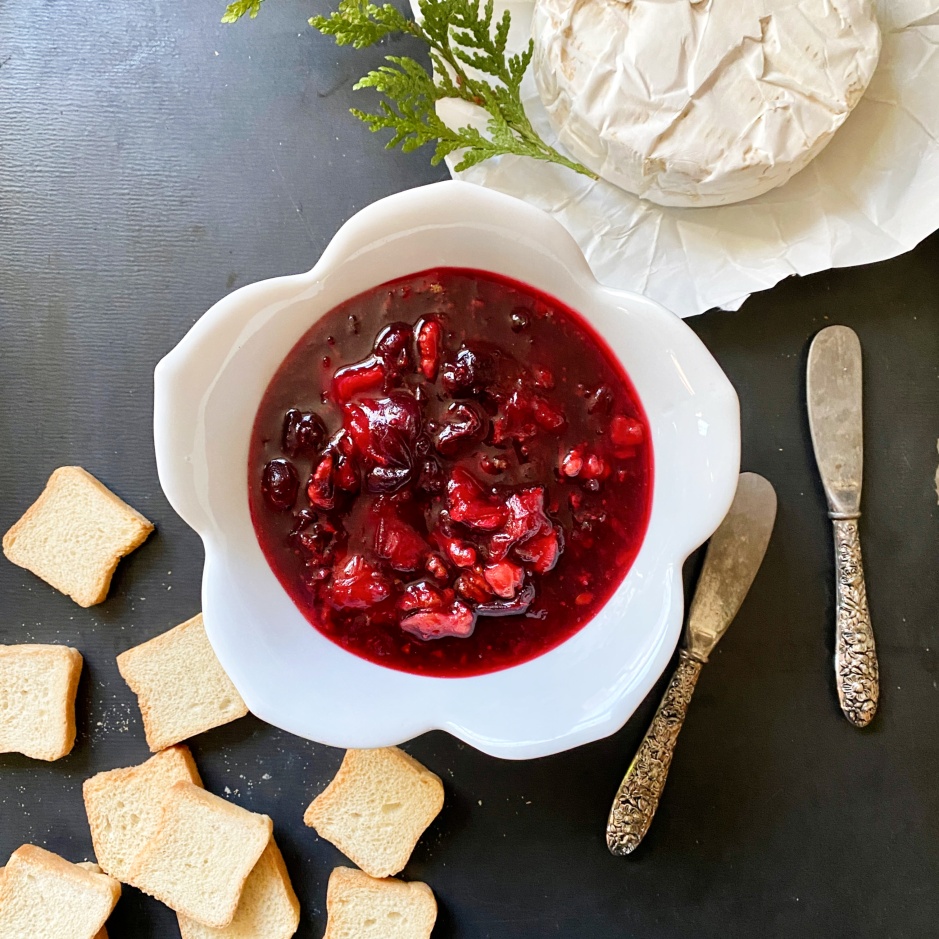{A Fragrant Year is an ongoing series shared throughout 2024 highlighting twelve fragrant plants, trees, flowers, shrubs and herbs added to the New England garden landscape, month by month, surrounding a house built in 1750.… More
Italy’s Chicken Canzanese and The Family of Artists Behind The Recipe
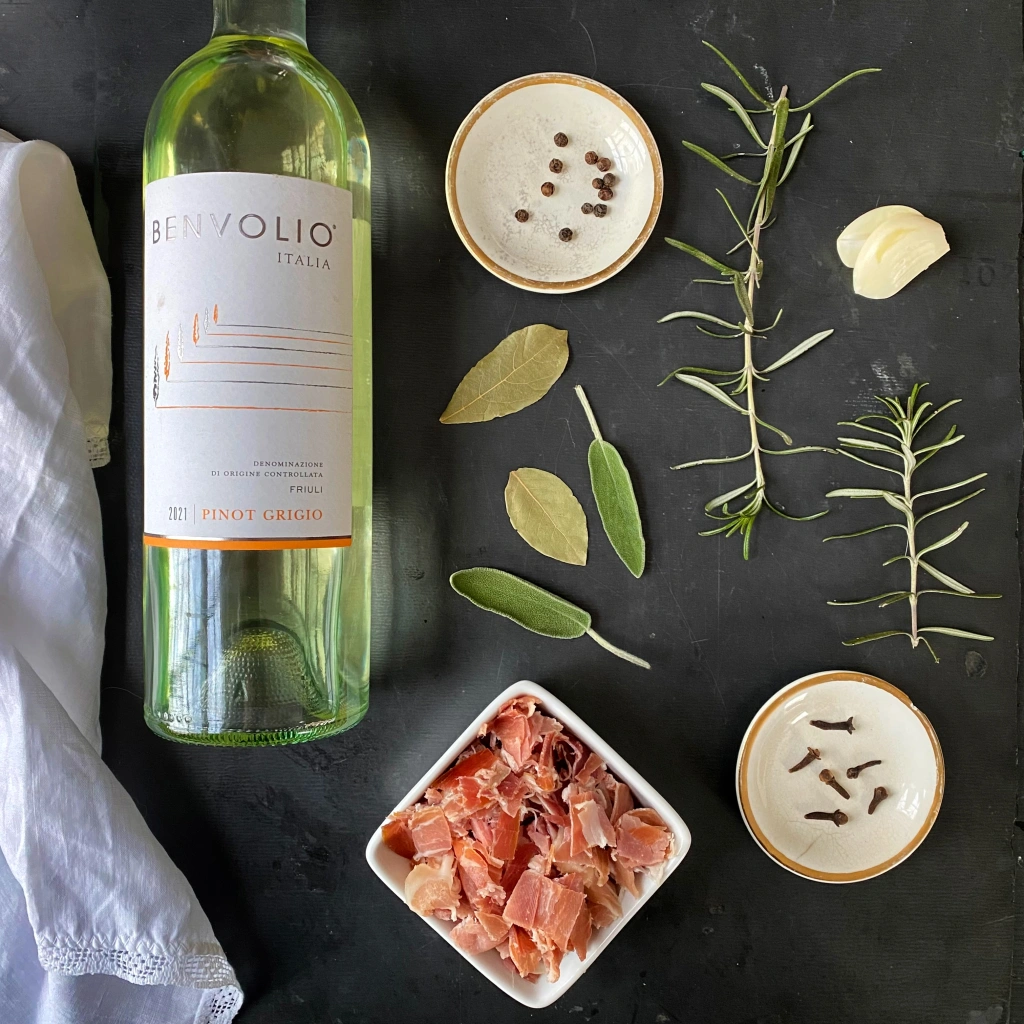
It’s just the start of 2024, but here in the Vintage Kitchen, there is a finish line coming into view. This year we will be wrapping up a five-year project that first started here on the blog in 2020. I’m so happy to say welcome back to The International Vintage Recipe Tour.
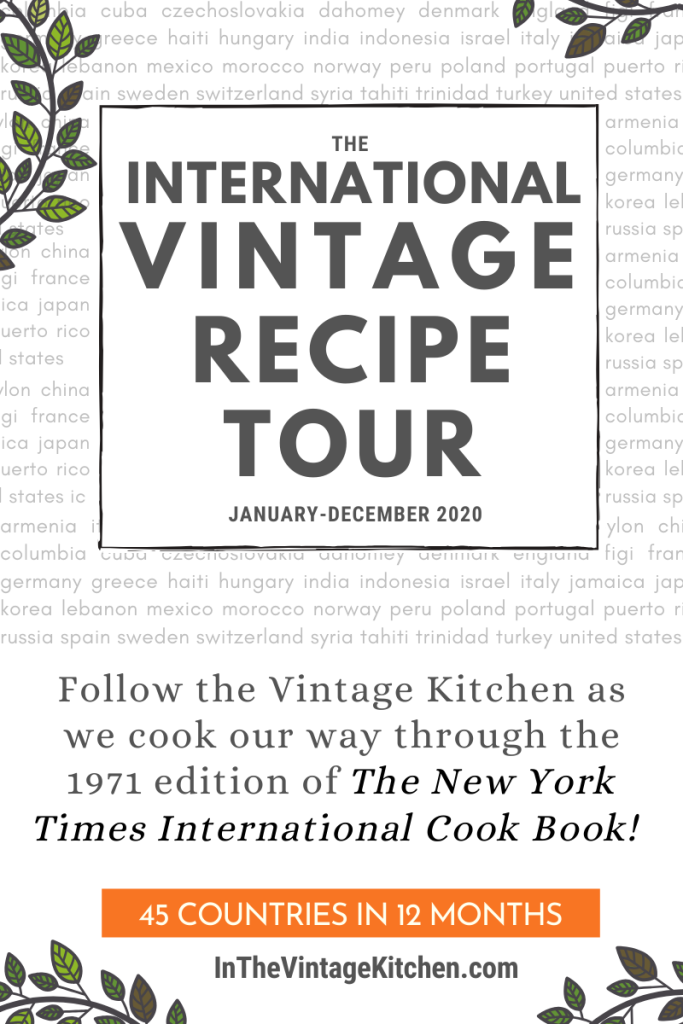
What started out as an intended year-long project of cooking 50 recipes from 45 different countries in 2020 has now taken five years to complete just to the halfway mark. A pandemic, a tornado, a big cross-country move and 1750 House renovations have waylaid plans far more than ever anticipated, but this project has always been such a joy I never wanted to not finish it. So here we are, at the start of 2024 finishing things up from 2020.
For a quick recap and for anyone new to the blog, The International Vintage Recipe Tour takes home cooks and readers on an around-the-world adventure via the kitchen, as we cook our way through a collection of recipes featured in the 1971 New York Times International Cookbook.
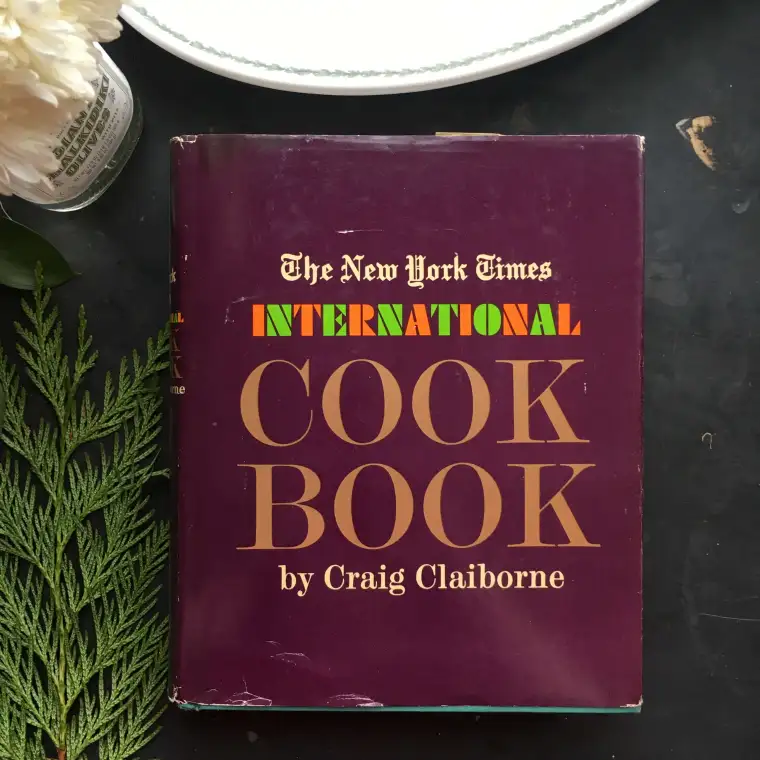
Throughout the Tour, we are visiting 45 countries via the kitchen and making at least one traditional heritage food from each, sharing both the recipe and the cooking experience here on the blog. To add context to the food we are making, and to spark some new conversations around the table, every visit to a new destination is paired with a unique cultural story from that country’s history.
So far we’ve visited twenty-four countries via the kitchen on this tour… Armenia, Australia, Austria, Barbados, Belgium, Brazil, Canada, Ceylon, China, Colombia, Cuba, Czechoslovakia, Dahomey, Denmark, England, Fiji, France, Germany, Greece, Haiti, Hungary, India, Indonesia, and Israel. It’s been a whirlwind of fun, friendship and delicious food.

We chatted with an author and a food columnist via Armenia, met a descendant of the designer of the Statue of Liberty via Germany, and embraced our inner bula in Fiji. We discussed tropical architecture in Haiti, made floating paper lanterns to celebrate the Hungry Ghost Festival in China and donated funds from shop sales to help save the koalas injured in the Australian wildfires. We discussed women’s fashion in India, interviewed a Cuban-American farmer in Miami, and learned about a long-lost African-American dance in Dahomey. On the food front, we curried in Ceylon, baked Queen Mother’s Cake in Australia, made homemade mustard in Denmark, learned that not all fondue comes in a hot pot in Belgium, and took a much-needed virtual vacation to Corfu via Greece.

Our latest stop on the tour was Israel, which lined up with the 2021 holiday season. To celebrate we made a Hannukah wreath, cooked two recipes for dinner, and dove into the history of both the Jewish flag and the Jewish star. Now, our next stop on the International Vintage Recipe Tour takes us to Italy, one of the most beloved cuisines in the world. Here we’ll make a provincial meal meant for sharing and meet an artist whose family recipes formed the basis of a life-long passion with food. Welcome to Italy.

It’s impossible to write about Italy without writing about family. And you can’t write about this recipe, Chicken Canzanese without writing about a specific family. Like France and China, Italy is one of the largest chapters in the New York Times International Cookbook. There are literally dozens of recipes to choose from, a switch from some countries that had less than a handful.

Besides the long wait to get the Tour started again, the hardest part about starting up again with Italy was which recipe to choose and which cultural treasure to spotlight. Contenders in that department were Stanley Tucci’s gorgeous Searching for Italy show, the multi-generational novel The Florios of Siciliy and the genealogy of the love apple (aka the tomato). There were all the pastas and all the sauces, lovely vegetable side dishes, and quite a few desserts to pick from, but the recipe that I kept coming back to was a one-pot chicken dish that was credited to an artist.
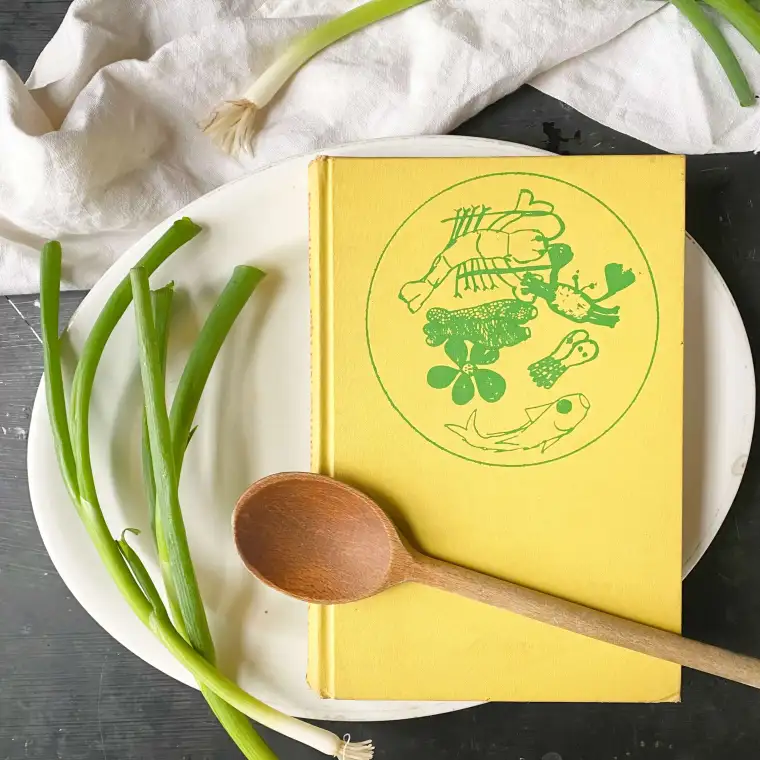
Last fall, while visiting a local bookshop, I discovered a bright yellow 1970s Italian cookbook. To my sheer delight and surprise, it was written by the same artist mentioned in the New York Times International Cookbook. A quick peek inside revealed the same exact recipe that was also featured in the NYTimes cookbook. The same recipe by one artist in two different books. It was a sign. This was the right Italian recipe for the Tour and the right time to tell a story about a creative spirit, who also happened to be an Italian cookbook author.

The artist is Edward Giobbi, a second-generation Italian-American born in Connecticut in 1926. Still painting today from his home studio in Katonah, New York, at the age of 98, Edward’s lived his entire life in pursuit of art and food. The book that made him well-known in the culinary world was his Italian Family Cookbook, first published in 1971. Selling over 30,000 copies by the 1980s, it offered home cooks a sincerity that resonated on multiple levels when it came to preparing economical and creative meals in true Italian style. The recipe featured here today, the one that appears not only in Edward’s cookbook but also in the New York Times International Cookbook, is his Chicken Canzanese, a slow-simmered one-pot made of chicken, herbs, wine, spices, and prosciutto.

A lovely selection for these end-of-winter days when the weather is jockeying back and forth between spring-like temps and snowstorms, this recipe is both light and hearty, depending on the sides that accompany it. It’s easy to prepare, has a warm, rich, earthy fragrance thanks to the prosciutto, garlic, and herbs, and can definitely be labeled a healthy comfort food since it contains no added fat.
The cooking prep is also interesting. There is a cold water brine, a unique set of flavor pairings, and a few very precisely measured spices… twelve peppercorns… six whole cloves… two sage leaves. I always find precise measurements like this fascinating. What was the process that a cook went through to determine that perfect balance of six versus seven cloves or nine versus twelve peppercorns? Would three sage leaves as opposed to two send the whole meal over the edge?

As it turns out, Edward’s style of cooking and how he first learned it was based on quality but also frugality. Growing up during the Great Depression taught him and his family the value of growing your own food and utilizing agricultural resources close to home. Nutrition was key to keeping everyone healthy. Nothing was wasted or under-appreciated. Every bit of joy that you could scrape from an experience mattered. As an adult, Edward approached food in much the same way.
In the NYTimes cookbook, the recipe for Chicken Canzanese is simply attributed to Ed Giobbi, the artist. But in Edward’s cookbook, Italian Family Cooking, it’s attributed to Edward’s mother by way of a woman who lived in Canzano, in the Abruzzi region of Italy.

Located in the middle of the boot, Italy’s beautiful Abruzzi/Abruzzo region borders the Adriatic Sea and also the Apennines Mountains, both of which provide ample agricultural opportunity. Canzano is 105 miles east of Rome, and 230 miles southeast of Florence, and although geographically considered central Italy, the culture and food traditions of this area mirror that of Southern Italy.

Full of food specialties ranging from provincial fish soups to local lamb dishes to plates of handmade pasta the traditional foods of Abruzzo favor both its maritime and mountain environs. Incidentally, this area of Italy is also known for a food often consumed at weddings here in the US. It’s the birthplace of the pastel-colored, candy-coated Jordan Almond, also called Italian Confetti locally.
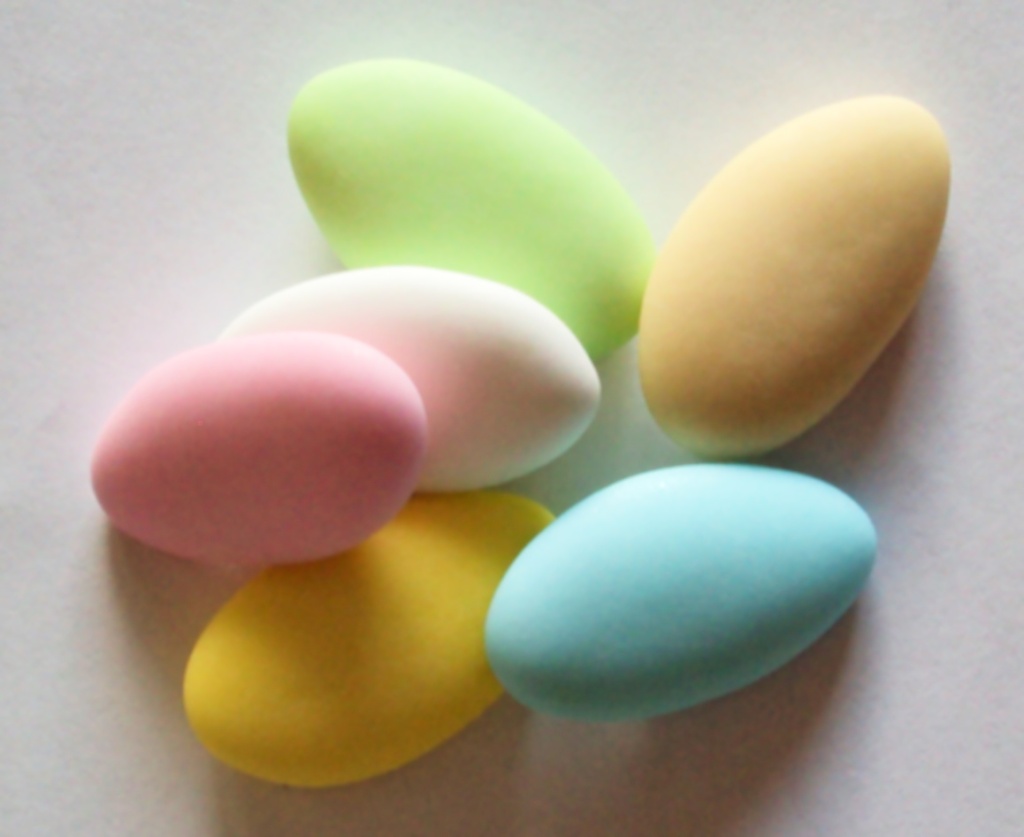
Edward’s parents immigrated to the US in the early 1900s first to Pennsylvania and then to Connecticut where they labored in factories and mills. Even though they both just had a third-grade level education, his parents had an appreciation for food, art and music which made a strong impression on Edward during his childhood. The Giobbi family kitchen would come alive at night and on weekends with the scents and flavors of his parent’s home country.

Once he left home to pursue his art, his mom’s heirloom recipes became a vital part of the creative process as he perfected each one in his own kitchen, practicing them over and over again, until they met her standards and his memories. That dedication to good food and good eating, combined with artistic sojourns to stay with extended family in Italy sealed his love of cooking indelibly.
By the time Edward married and had his own family, preparing daily meals was a pleasure equal to painting. In his children, he instilled a similar joy. Art and cooking became a throughline that ran strong in the new generation of the Giobbi family members.
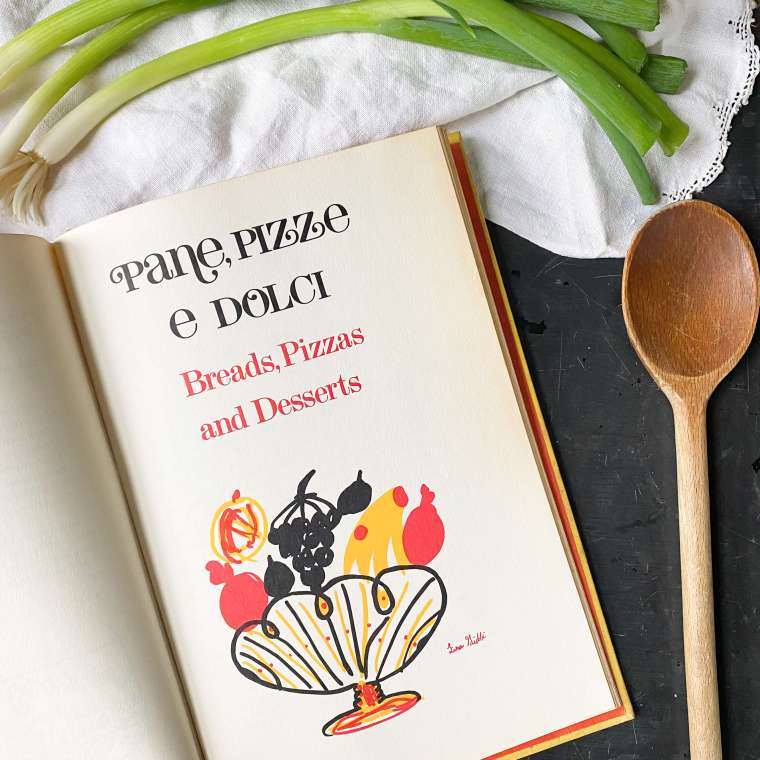
Apart from the myriad of wonderful traditional Italian recipes in Edward’s cookbook, the illustrations stand out with vibrant appeal and eye-catching charm. The art was executed not by a hired freelancer or a publishing industry dynamo. It wasn’t executed by a professional food photographer or a graphic design studio. Instead, the illustrations for his cookbook were illustrated by a collection of painters entirely new to the world – his children, Cham, Lisa and Gena who at the time ranged in age from six to nine.


Edward gave his kids no direction when he asked them to paint pictures for the cookbook other than to say “draw a fish, or a soup pot or a bottle of wine.” Each of his artists offered their own interpretation.
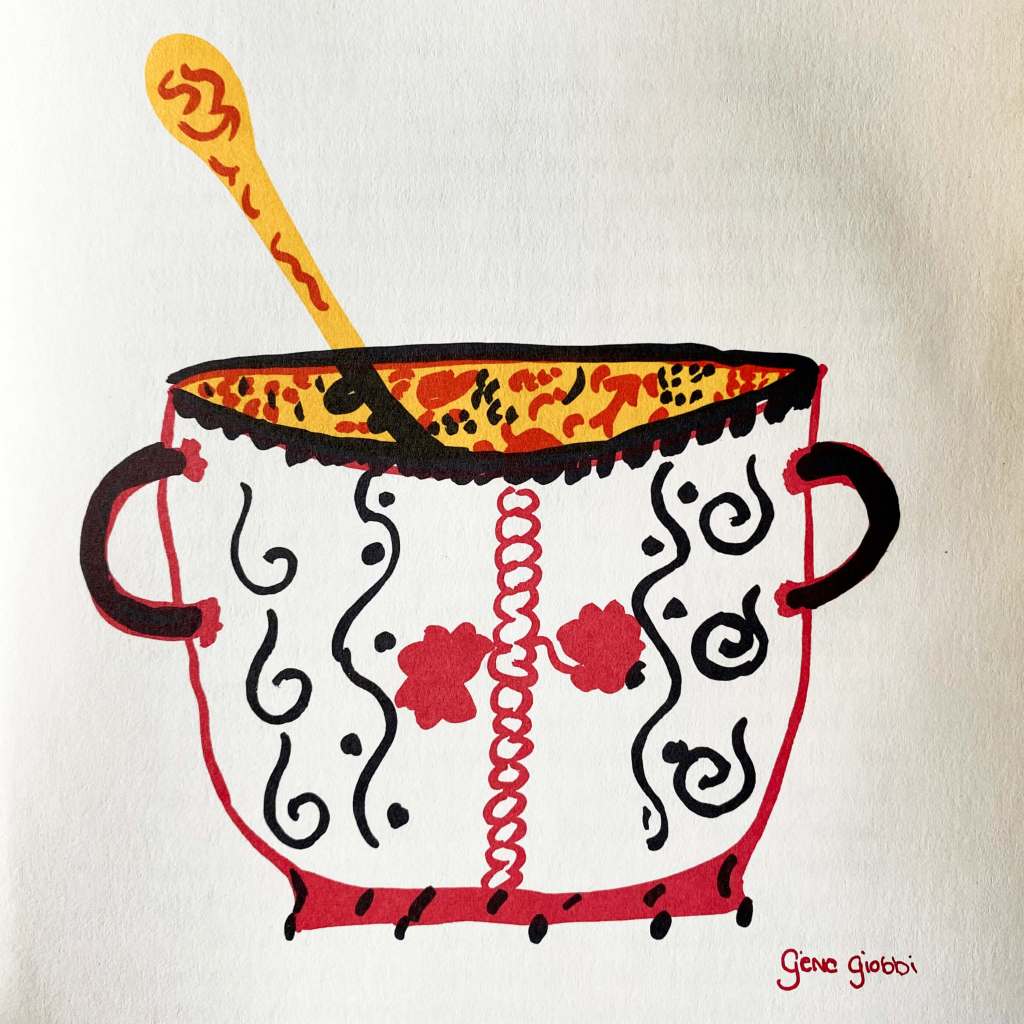

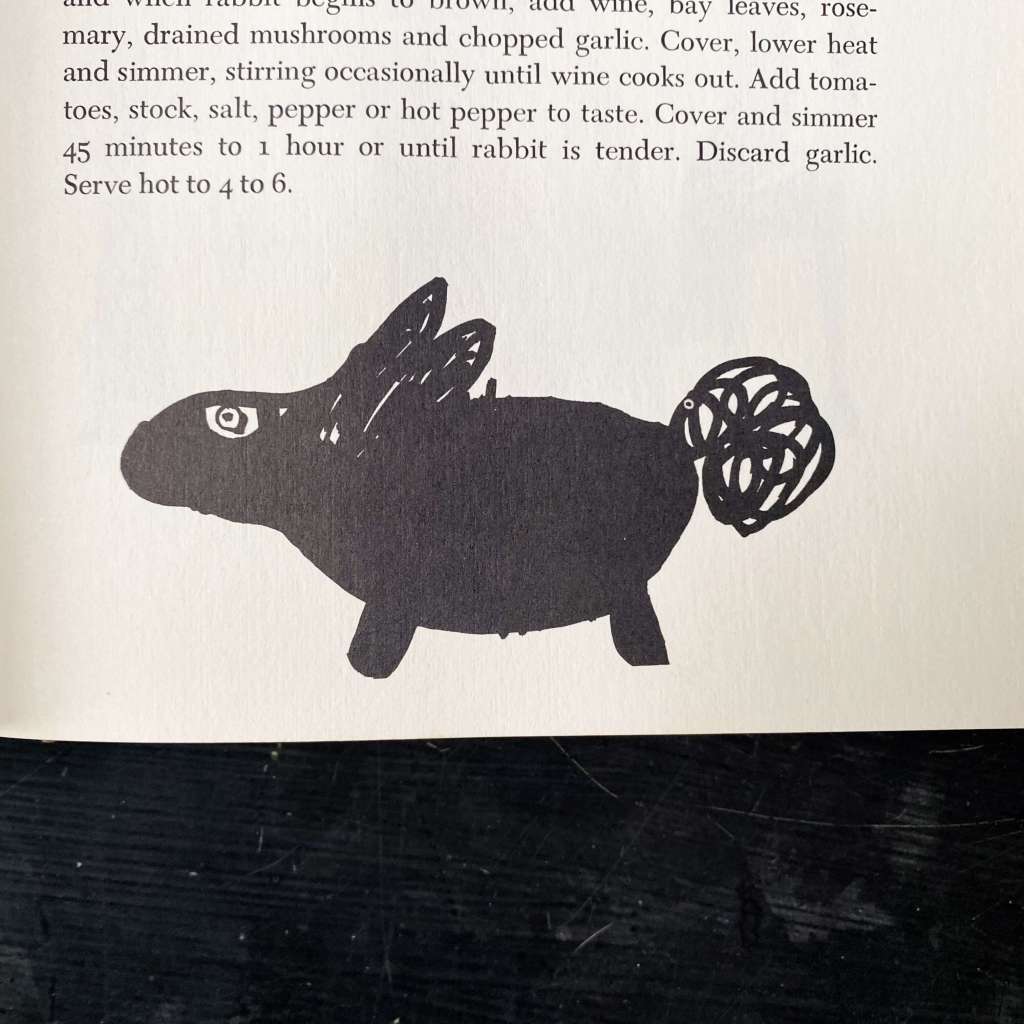

Whimsical and sweet, Edward Giobbi’s Italian Family Cookbook was indeed, in all ways, a family affair from kids to parents to extended relatives. It didn’t stop at this cookbook either. Edward went on to write another successful cookbook, Eat Right, Eat Well: The Italian Way (1985) and his band of illustrators grew up to pursue their own careers in art, dance, music and food science.
In keeping with the Giobbi clan’s combined love of the kitchen, nothing seems more fitting than presenting this recipe on a Sunday night when family dinner rules the kitchen in most Italian households. Named for the town in which it hails, Chicken Canzanese is a meal intended for communal family dining. Simple to make, it’s a two-step process that involves a one-hour wet brine and forty minutes of cooking time. True to Edward’s nature and his mother’s style of cooking, it’s made of simple ingredients and offers a bevy of creativity in the side dishes in which you choose to serve with it. More on those thoughts follow the recipe.

Edward Giobbi’s Chicken Canzanese
Serves 4
One 3 lb chicken, cut in pieces
2 sage leaves
2 bay leaves
1 clove garlic, sliced lengthwise
6 whole cloves
2 sprigs fresh rosemary or 1/2 teaspoon dried
12 peppercorns, crushed
1 hot red pepper, broken and seeded (optional) or 1 teaspoon dried red pepper flakes
1/4 lb prosciutto, sliced 1/2 inch thin or one 4oz package of pre-sliced prosciutto*
1/2 cup dry white wine
1/4 cup water
Salt for brine (see note)
Place the chicken pieces in a mixing bowl and add cold water to cover and salt to taste. *Note: I used a large mixing bowl and 1/8 cup of sea salt to 6 cups of water. Cover with plastic wrap and store in the fridge for 1 hour.
Drain the water and rinse the chicken pieces completely before patting dry with paper towels.

Arrange the chicken pieces in one layer in a skillet. Add the sage, bay leaves, garlic, whole cloves, rosemary, peppercorns and red pepper. Cut the prosciutto into small cubes and sprinkle it over the chicken. *Note: If using pre-sliced prosciutto, remove all the paper or plastic sheets between each slice. Stack the prosciutto one on top of the other, and cube the whole stack at once.
Add the wine and water. Do not add any additional salt, since the prosciutto will season the dish. Cover and simmer 40 minutes. Once the chicken has cooked to an internal temperature of at least 165 degrees. Uncover and cook briefly until the sauce is reduced slightly. Serve hot.

Rustic and earthy, Chicken Canzanese is tender and full of subtle flavors. The broth itself is fairly salty on its own thanks to the simmered prosciutto, but soak it up with a piece of crusty bread, and the briny flavor mellows. There were no serving suggestions mentioned in Edward’s recipe nor the NYTimes, but the broth would be lovely tossed in a warm bowl of pasta, spinach, peas, potatoes or mushrooms. If you are feeling decadent you could add a dash of cream to the broth to balance all the flavors. As Edward says in the introduction…”Cook the food in this book with a free hand, using your own creativity with the freshest ingredients you can get.”
Collected by museums and galleries around the world, throughout Edward’s long art career his style has varied…



He dislikes labels or being lumped into a certain type of painting, but he one thing Edward consistently strives for in his art instead is honesty. The same could be said for his cooking. All of his recipes are celebrations of local eating. They reflect riding the highs and lows of economy, of balancing cooking constraints with bounty, and the importance of identifying local resources. His recipes are interesting, creative, nourishing. They are of the earth and of the moment. I think that’s what makes Italian food so appealing. It’s a cuisine rooted in a waste-not culture that appreciates what’s right there in front – all the bounty that the earth can offer.

My favorite piece in Edward’s catalog of work is this one. I think it’s the most food and family-like of all his art. In my interpretation of it, I can see his whole entire world. His whole lineage in mixed media. There are blue fish in the sea at the bottom right. A mountainous landscape in the middle. There’s red for blood, life, wine and energy. I see flowers, woodland foraging, and garden soil. In my mind, that blob of brown represents all the possibilities that might grow from a simple swatch of ground. And the tree. The beautiful, exuberant tree surrounded by dots of confetti-like splatters and stars. That’s the Giobbi tree. The one that represents the vitality of nature, the sparkle of life, of wife, of children all rolled up in one. I could be reading too much into it. Maybe it’s just what the title says - Fall Still Life. Maybe it’s an autumn landscape in Canzano, Italy. Or a pairing of items Edward arranged in his home studio in Katonah, New York. Maybe it represents a lot more or even possibly a lot less. Or maybe… just maybe… it’s the word, the work, that Edward’s been striving for all along.. honesty.
Cheers to Edward for sharing his family’s Italian heritage with us here in America via books, art and storytelling. Cheers to his kids, Cham, Lisa and Gena for their fantastic illustrations. And finally, cheers to the unnamed woman in Canzano, who passed this recipe along. I wish we knew your name so we could credit you properly for the delicious dish.
If you’d like to catch up with the recipe tour from the very beginning days in 2020, start here or click on any of the country links mentioned above to visit those specific posts.
Next up on the International Vintage Recipe Tour, it’s a trip to Jamaica via the kitchen. Hope you’ll join us!

Welcome To A Fragrant Year: The Greenhouse Diaries Return for New Growing Adventures

The Greenhouse Diaries are back with new inspirations and a whole new year of growing adventures to explore and discover. Like last year, these new diary entries center around what can be grown in a petite 4×6 greenhouse in our four-season New England climate, but starting this month there is a brand new theme, different from last year, that is guiding our gardening goals in 2024.
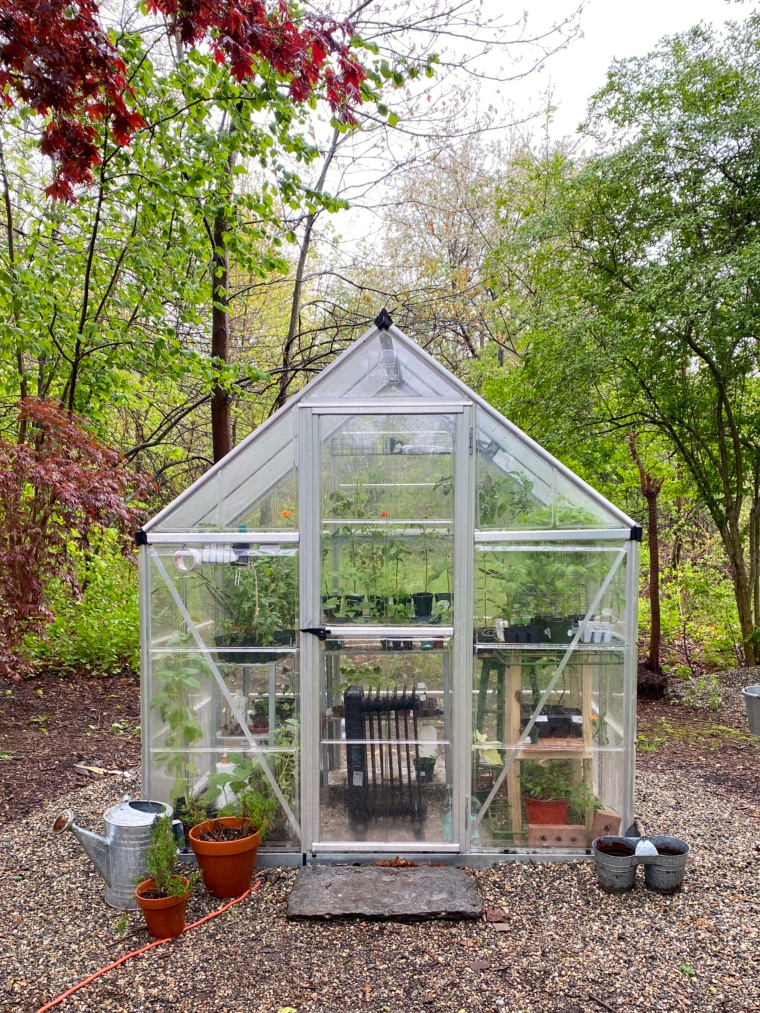
Last year, our first year as greenhouse owners and New England residents, we focused on winter gardening from December through May and all the possibilities that a warm greenhouse could offer in a cold landscape. We drew inspiration from Katharine Sergeant Angell White, a lifelong lover of the natural world who also happened to be a marvelous writer, a founding editor of the New Yorker magazine, and the beloved wife of E.B White.

Her 1977 book Onward & Upward in the Garden, featured a collection of horticultural essays that highlighted her ability to embrace challenges by finding joy and solace in the certain uncertainties. Something that all gardeners must face when it comes to designing a pleasing landscape, in Katharine’s case, it was the long Maine winters that were a struggle for her spirit which yearned to be out in the garden digging and clipping, pruning, and propagating. She also had much to say about the confusing advice of garden experts and her own thoughtful attempts of trying to create the garden of her dreams. Her writing was full of spirit, humor and opinion when it came to detailing plans, recommending books and seed catalogs, and offering advice on growing plants and flowers both indoors and out. She was inspiration enough for us to start experimenting with our first winter growing season. Cold weather aside, we had Katharine on our side, lending a unique empathy and encouragement that fueled our desire to get out and grow things regardless of the weather, our experience level or the unseasonability of what we most wanted to achieve.

Our plan last year was to get a head start on establishing garden beds for 1750 House, so we focused mainly on forcing seeds and plants to sprout, bud and bloom early. Using 33 different plants, flowers and herbs as trial-run guinea pigs, we accomplished our goals with a fair amount of success and a few setbacks as we tested the physical capabilities of the greenhouse and grew our garden knowledge.
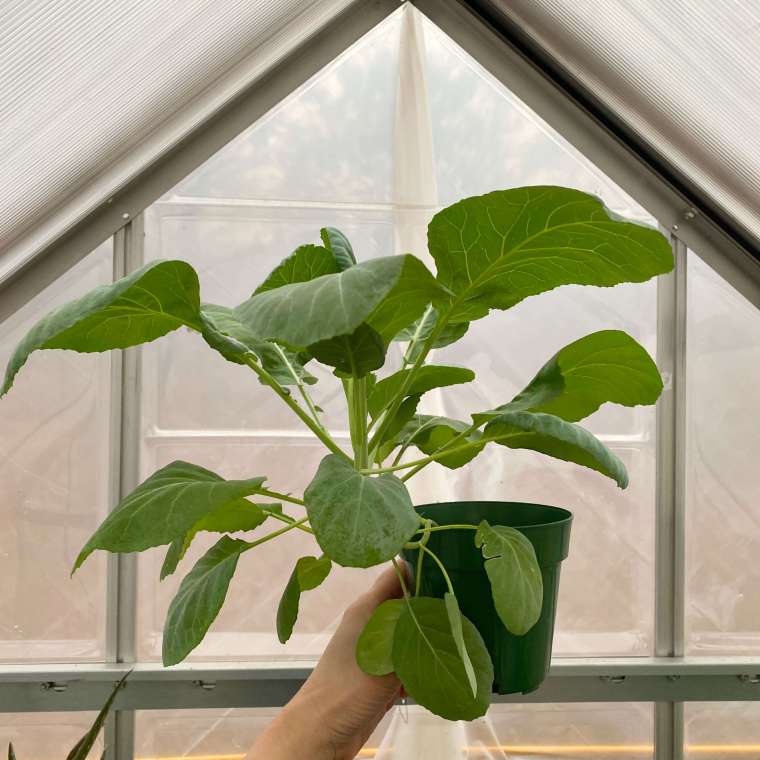
This time, a year wiser, we are reducing the number of overall plants in the greenhouse to just focus on the proven winners that grew well both in the greenhouse and in the garden beds last spring, summer and fall. And to keep things interesting, we are launching a new experiment. This year, we are leaving extra room in the greenhouse to try our hand at growing a new type of perennial garden for year-round enjoyment… a landscape full of plants, flowers and trees that carry a scent.

When we lived in the South, we were surrounded by a wide variety of aromatic flowers that made our time there all the more memorable because of the beautiful perfume that continuously lingered in the air. The scent of night-blooming gardenias and fragrant magnolias swirled around our dinner parties. The heat of summer brought heavy humidity but also the delicate, sweet aromas of climbing Carolina jessamine. Roses in every scent and shade toppled and tumbled over hedgerows and brick walls. It was a lovely layer of landscape design that I had never really thought about until we had experienced it firsthand. Of course, we won’t be able to recreate an exact aromatic Southern garden here in New England since it’s a very different climate from there to here, but there are plenty of other options in the Northeast to explore for similar effect thanks to our new inspiration.

Here to guide the 2024 Greenhouse Diaries in our aromatic endeavors is the 1967 book, The Fragrant Year by Helen Van Pelt Wilson and Leonie Bell. Month by month, in words and drawings this book details how to grow specific types of plants and flowers that will continuously unfold new scents in the garden season by season, even in the winter months.
Praised for being the first of its modern kind, The Fragrant Year was lauded both for its scope and its practical application, as well as its healthful benefits. In the opening chapter Helen writes… “if our gardens today were more often planned as fragrant retreats and our rooms were frequently perfumed with bowls of spicy pinks, bunches of aromatic herbs, vases of fragrant roses, and jars of potpourri, perhaps we would not have to depend so much on tranquilizers to hold us together in this frantic, fast-paced world.”
Helen wrote that in 1967 but it is still so applicable today. The world is still frantic and fast-paced. People still look to medicine to calm their nerves. But we think Helen’s theory is pretty wise – there is something much more natural, more gentle, more joyful in tackling frantic nerves and fast paces with this sort of approach instead. It is lovely to think that by selecting a few handfuls of scented botanicals and thoughtfully adding them to the landscape we might not only help create a more calm environment for ourselves but also for the community around us. Who knows what sort of impact that small gesture could have on a greater world.

A prolific writer of gardening books throughout the 20th century, Helen was no stranger to the power of plants. Along with penning a newspaper column titled Our Gardens Within and Without during the 1920s and 1930s, she also wrote for all the well-known women’s magazines including House & Garden, Cosmopolitan, Better Homes & Gardens, and House Beautiful. In between all that she wrote/edited over fifty books on various gardening topics throughout her long and lengthy career.

Born in New Jersey, Helen spent the majority of her life in Philadelphia, PA and Westport, CT where she experimented with gardening projects of all sorts both indoors and out. Her most well-known book was one on caring for African violets published in the 1940s but she was a beloved and trusted authority on a variety of horticultural topics throughout her life. Working with Leonie on several different projects, it was in the 1950s that they learned they shared a mutual love of aromatic botanicals. Upon discovering this, the idea for The Fragrant Year was quick to spark but it took Helen and Leonie ten years of dedicated research and trial-and-error gardening experiments before their book was finally published.
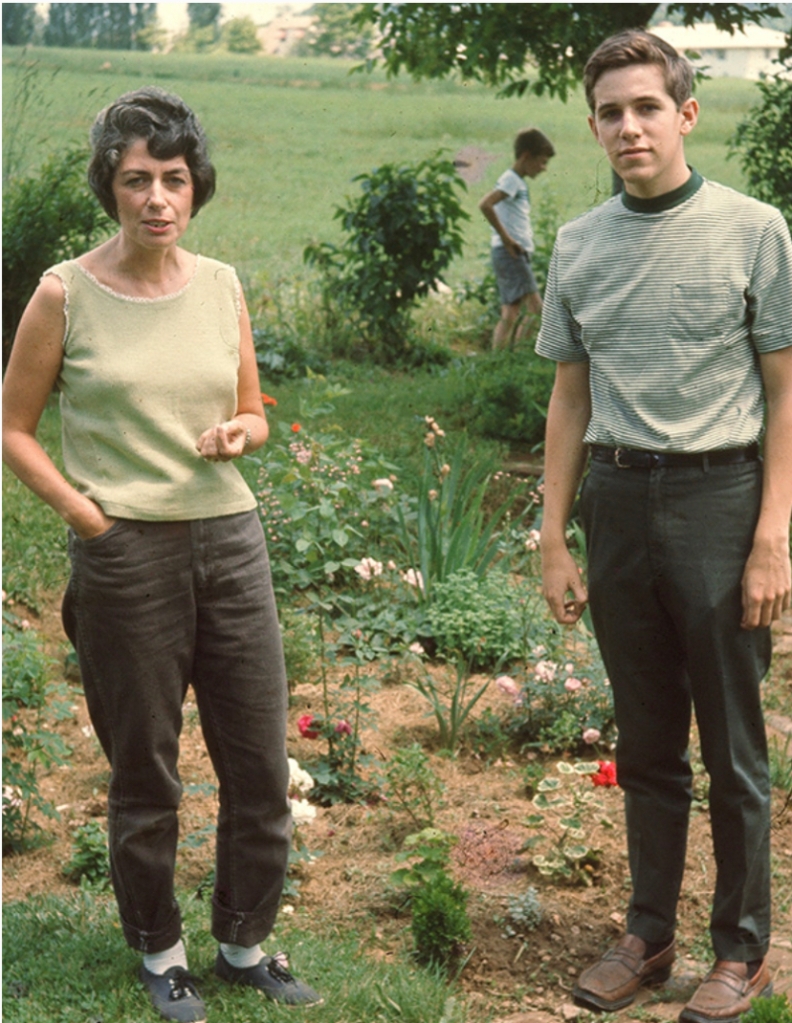
Like Helen, Leonie Bell (1924-1996) lived and gardened in suburban Philadelphia. In addition to being a well-respected botanical illustrator, she was also known as a rose expert. Contributing her expertise to several rose garden books published during the 20th century, Leonie was often referred to as a rose genealogist since she had a knack for discovering/uncovering heirloom roses from the past that had been misnamed or believed to be no longer in existence. At one point, her own personal garden contained over 200 different types of roses, most of them old-fashioned heirloom varieties.

If you are ever in Virginia, you can see the impact Leonie made at the Leonie Bell Rose Garden at Thomas Jeffferson’s Tufton Farm, which features a tribute to both Leonie’s legacy and the history of North American rose breeding.
Much sought after in the world of botanical illustration, what’s interesting about Leonie’s art is that she was self-taught. Her intrinsic knowledge of the anatomy of plants combined with her studies at the School of Horticulture in Ambler, PA led her to closely look at botanical subjects from all angles. That well-rounded vantage point carried through to her drawings which shine with scientific detail but also personality.

Excited to share a year full of fragrance here on the blog, each month we’ll feature a new scented flower or plant recommended by Helen and Leonie and detail our gardening experiences as we incorporate twelve new aromatic additions into the landscape at 1750 House. Hopefully, you’ll find this information equally inspiring and insightful too. It would be lovely if we could all experience the calming nature of a scented garden together.
Our next Greenhouse Diaries post will introduce our first fragrant botanical, but in the meantime, here’s a quick update on improvements we made to the greenhouse over the summer and a current list of what’s growing in the greenhouse now…

Current Occupants
As of mid-January, the greenhouse is halfway full with overwintering geraniums, vinca vine, and dracaena spikes from the summer garden. Six different types of succulents, a coffee plant, a pineapple sage cutting from our summer plantings, and Liz Lemon (our five-year-old lemon tree) fill out the rest of the space alongside a batch of newly started seeds… collards, broccoli, beets and four different types of salad greens.
Winter Plastic Wrap
This isn’t a new improvement, but we are on Year No. 2 of dressing the greenhouse in a winter coat – aka wrapping it entirely in a layer of thick plastic – to keep the heat in and protect the plants from drafts during rain, sleet, and snowstorms. The plastic, a temporary solution for the coldest months gets removed in early spring, folded up, and stored in the basement. Once the temperatures drop below 45 in the fall, we put the plastic back on for the season. Aesthetically, it’s not the prettiest site but it gets the job done and keeps our overwintering plants and new seedlings happy and warm. We weren’t sure how the plastic was going to hold up from year to year, but so far it’s nice to see that it is still working just as well. To learn more about this winterization system, see last year’s post here.

New Electrical
Over the summer we added an electrical outlet inside the greenhouse and buried the wiring underground. This was a big (and much safer) improvement from running an extension cord across the yard between the greenhouse and the workshop, which is how we handled things last winter. This new addition is an outdoor-rated 110V 15 amp circuit box which is just what we need to power the heater and lights.

A New Heater
A new mini space heater replaced the tall radiator-style heater used last winter. This smaller size opens up more room to move around the greenhouse and fits nicely on a bottom shelf tucked out of the way when not in use. It has a safety feature that turns the heater off automatically if it tipples over or if any excess moisture drips inside. When the greenhouse reaches a certain temperature, it also automatically turns off to save energy and to keep the plants from overheating.

By using this smaller unit, we don’t have to run out and adjust the heat as the temperature changes over the course of the day, like we had to do last year. Also, we readjusted our required heat temperature in the greenhouse. Instead of keeping it in the mid-70s like last year, we lowered it to 55 degrees, in hopes that the cooler temp will keep spider mites at bay. We learned first-hand last winter how much they just adore a hot greenhouse. The new heater also blows warm air around the space instead of radiating it, so we have continual air movement swirling around inside this year, which I also hope will help with any pests. The final great benefit of this small little worker is that it has an additional fan option too, so in summer we’ll be able to grow our herbs inside the greenhouse without the temperature getting too hot or the air too stagnant.
New Lights
My most favorite new enhancement to the greenhouse came this fall when we added bulb lights to the interior roofline. The lights make it so much easier to work at night, especially in the winter when it can get dark as early as 3:30pm if we have an especially cloudy or rainy weather day.

These bulb lights are a tad too big for the space, so they’ll be swapped out for something a bit more petite this spring, but we had these already on hand and wanted to make sure we liked the light idea before we committed to several sets. At night it looks especially festive. Once all the landscaping is in place around the greenhouse, it will provide a nice light source for outdoor dining during the warm weather days. By then we’ll be at least five months into the fragrant year and the garden will hopefully be on its way to becoming a perfumed paradise. Just dreaming about it now, I can see and smell the summer already.

If you’d like to catch up on the trials and tribulations of our first year of greenhouse gardening start at entry #1 here. Otherwise, it’s on to 2024 and all the delightful aromas that await each new season.
Cheers to ever-evolving garden adventures, to a scent-sational year ahead and to Helen and Leonie for inspiring this new set of diary entries centered around the life and times of one mighty but mini New England greenhouse.
A Monumental Story of Real-Life Serendipity Told Over Many Parts: Chapter 4 – One Last Journey

{Spoiler Alert: This is a series of blog posts detailing the real-life story of a 100-year-old item that was lost over a decade ago and how it found its way home in 2024. Follow along from the beginning of this story at Chapter 1: It Arrives.}
This part of the lost item story is about numbers. Not numbers relating to complex math or phones or registry digits, but numbers that have to do with time and distance. So far, with the unfolding of each chapter of this Monumental Story of Real-Life Serendipity Told Over Many Parts, we have learned bits and pieces about the lost item and how it came to wind up in the hands of the Vintage Kitchen. We learned how it arrived, who sent it and what part of history it involves. But we haven’t yet discussed the numbers, and they are quite important to the overall timeline of this intriguing item. So let’s look…
- 104 – that’s the age, in years, of the lost item
- 6,544 is the number of miles the item has traveled
- 7 is the number of states that the item has spent time in
- 3 is the number of major life-altering world events that could have completely destroyed the item and any link to its history over the past 100 years (those being the Great Depression, World War II and the Covid pandemic)
- 25 – that’s the number of people that are all connected to the item
- 29 is the number of months it took for the Vintage Kitchen to arrange to get the item to the place where it belongs

Transportation to its final destination was another set of numbers. That involved 3 cars, 1 plane, 1 bus and 1 boat. In its original cardboard mailer of medium thickness tucked inside a cloth shoulder bag, the item traveled in seat 21A on the plane and Lane 1 on the boat. This last round of Vintage Kitchen transporting from here to there required 5 different types of travel tickets, 1 Airbnb, 3 highway tolls, 2 parking garages, 1 security checkpoint and 1 wild landscape. But the most important set of numbers in this whole post are 2008 when it was lost and 2024 when it finally made its way home.

On 01-02-24, after 29 months spent in the hands of the Vintage Kitchen and 13 years spent in the care of kind-hearted Angela, the item embarked on its final journey via car, plane, bus and boat. Four days later it found the place where it belonged. It finally found its home.

Time is a weird and wonky master. It controls, records, rewards everything in our lives. Whether it’s minute with the tick, tick, ticking of seconds slowly passing by or an expansive stretch of milestones that cast long shadows over the course of a lifetime, time is always there to mark the moment. In this case of the lost item, timing, like the cliche suggests, is everything. It’s numbers on a clock, numbers on a calendar and numbers in a family. Without time, this story wouldn’t have been as meaningful. Without a significant sets of numbers all related to time and to fate, this situation from history wouldn’t have been remarkable. It’s the numbers, the time, the distance traveled that make this story of the item lost and finally found, notable.
This is your last chance to guess what the mystery item might be. Feel free to speculate in the comments section below or send us a private message with your ideas. Join us next time for Chapter 5, where we reveal the mystery item and connect all the dots that complete this story from start to finish. We cannot wait to share the ending with you. Stay tuned.
Update: Chapter 5 is now available. Continue reading here.

A Monumental Story of Real-Life Serendipity Told Over Many Parts: Our 2021 Blog Series Is Finally Back with New Chapters

It’s been two years and five months since this story began unfolding on the blog. Back then, the blog series with the impossibly long title – A Monumental Story of Real-Life Serendipity Told Over Many Parts detailed, in installments, the story of a mysterious package that was sent by a random stranger to the Vintage Kitchen in the summer of 2021.
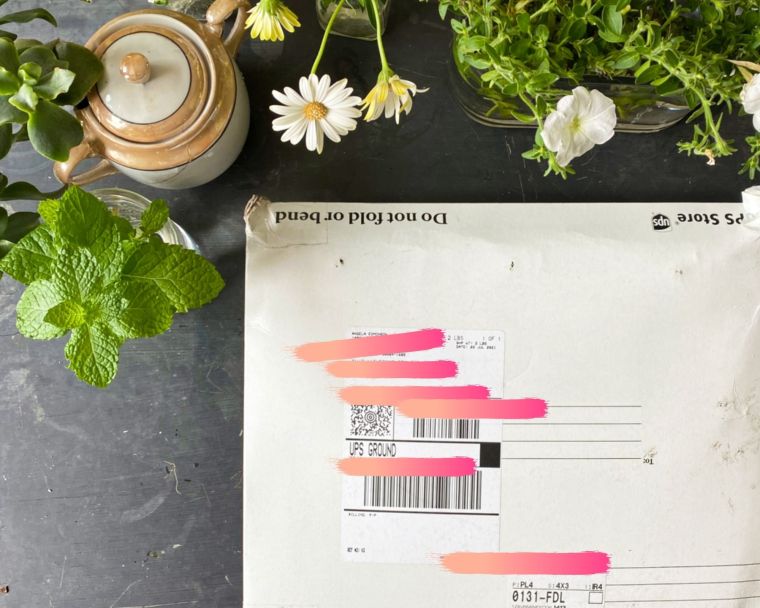
Inside the package was a valuable 100-year-old item that had been found in a Southern city suburb by the random stranger in 2008. The item was connected to the Vintage Kitchen but did not belong to the Vintage Kitchen.
In 2021, the story had been rolling out at a nice clip. There was one blog post a month – one chapter a month – dropping hints and clues as to what the package’s contents could be and how it came to be connected to the Vintage Kitchen. In addition to the hints, Chapter One, Chapter Two, and Chapter Three also included historical information surrounding the lost item’s importance.
Chapter 4 was next on the horizon with details of how the lost item would be transported to its final destination. Then the lingering pandemic stalled the publication of that post. Our move to New England prolonged it even further. But now the timing has lined back up again and we are back on track to finish this story and reveal the contents of the package in Chapters 4 & 5 coming to the blog this month. These last two chapters will officially wrap up the whole remarkable story of how a lost 100-year-old item finally found its way home after traveling through 13 years, four states and one century.
I realize that if you are a new reader to the blog this information is absolutely confusing. And perhaps, if you are a regular reader you might need a recap to remember what exactly this story was all about in the first place. Two and half years is a long time to keep a good mystery going so I’m including links to the first three blog posts below so that everyone can catch up before we continue on to Chapter 4, which I promise is coming in a few days (not years).
So here we are… links to each. Click on the photos or the highlighted chapter title links below and they will take you to the original posts laid out chapter by chapter.

Chapter One, titled It Arrives highlights the arrival of the mystery package and introduces some key information about the contents of the package.

Chapter Two, Meet Angela introduces the random stranger who sent the package to the Vintage Kitchen. It also highlights her research journey of how she wound up connecting the item to the Vintage Kitchen.

Chapter Three, The Time Period, highlights the era that surrounds the package’s contents – the 1920s and features several hidden clues as to what the mystery item might be.
Coming up next, it’s Chapter Four – One Last Journey – where transportation of the mystery item will be discussed as the item embarks on its final adventure to the place where it belongs.
While the story continues to unfold, there is still time to take a guess as to what the mystery item might be. Feel free to post your speculations in the comments section below. I can’t wait to share the rest of the story with you, so stay tuned for Chapter Four coming soon!
Reading While Eating: Seven Favorite Books Discovered in 2023

Just in time, before we say goodbye to 2023, I didn’t want the year to leave without posting the annual recommended book list that has become a favorite here on the blog. This year’s selections center around nature, literary figures, artists, the art of collecting, and the curation of home in all the ways that make it personal and unique.
As is the way every year, these books were randomly discovered while doing research for other projects. They popped up while uncovering origin stories for shop heirlooms, researching story snippets for the blog, or understanding context surrounding a vintage recipe.

Serendipitous in their arrival on the bookshelf, yet ironically all connected via some common themes, these books were new to me this year but not newly published this year. The oldest one in this batch hails from 1979 and the newest one debuted just last year in 2022. All deal with historical subjects in one way or the other, but each one brings a very unique and fresh perspective to its subject matter. They take us on adventures from the wild beaches of coastal Massachusetts to an out-of-the-way antique shop in Mexico. We are introduced to a famous performer’s real-life home in California and a fictional version of a real-life literary figure’s farm in Georgia. There feature one Ernest, two Barbaras and three oranges. There’s eccentricity and domesticity, color and craft. But above all there is captivating storytelling right from the first page. Let’s look…

Six Walks by Ben Shattuck (2022)
What is it like to walk in the footsteps of Henry David Thoreau? Do you see the same trees, smell the same air, touch the same ground, feel the same breeze? Henry lived and wrote and walked around the woods in Massachusetts over one hundred years ago and the impact it made on his life made his life. During the pandemic, trying to process a breakup and a general malaise that hovered over his thoughts like unsettled storm clouds, Ben Shattuck rediscovered Henry’s journals. Henry’s words so inspired Ben that he set out to see the world through “someone else’s eyes for a change,” hoping that he might gain some new perspective to help him past his grey days.

Following six of the same walks that Thoreau once took in the early to mid-1800s, Ben was searching for a new perspective, and a new understanding on life, love, and his place in it. For Henry, the walks were about looking at nature, about describing his surroundings, and about drawing comparisons between the natural world, human evolution and the emotional and spiritual impact on both. For Ben, walking was a form of therapy to help him move past some darker days, all the while submerging himself in the comfort of a favorite writer’s words and viewpoint. What results is this incredibly gorgeous book about nature writing, about escapism, about processing emotional trauma, and about seeing the real beauty that surrounds us every day.
On the walks, Ben meets an interesting array of characters. He goes in search of his ancestral homeplace, canoes down rivers that feel wild and untamed, and walks down long stretches of the beach until his feet are bloody and blistered. Funny, tender, thought-provoking and beautifully written, Ben’s perspective and lovely turns of phrase are just as illuminating as Henry’s. Part travel memoir, part therapy session, part sketchbook, Six Walks is one of the most beautifully written books about journeying that I’ve read in a really long time.

Finding Frida Kahlo – Barbara Levine (2009)
Written in both English and Spanish, this book is a fascinating portrait on the act of collecting and the art of curating. Finding Frida Kahlo is the true story of discovering a set of trunks belonging to Frida Kahlo in a Mexican antique shop. The woman who discovered these historical heirlooms was Barbara Levine, a former exhibitions director at the San Francisco Museum of Modern Art who had recently moved to Mexico and was trying to assimilate into the culture. A trip with a few friends to an out-of-the-way antique shop led to the discovery of several trunks belonging to Frida Kahlo each filled with all sorts of her treasures – clothing, paintings, recipes, letters and personal heirlooms.

This discovery started a storytelling chain that is movie-like in scope and plot, unfolding all the unusual circumstances that led to the ultimate understanding of how trunks from one of the world’s most revered, most studied, and most collected artists could possibly have wound up quietly sitting on the floor of an antique shop practically unnoticed. Throughout the story, there is Barbara’s commentary on the processing of the collection, interviews with the antique shop owners, the detailed history of communication with the collector who held the suitcases originally, and consultations with the Fridos (the last remaining group of artists and writers who personally knew Frida Kahlo). I won’t share any more of those details here so as not to spoil the pacing of the story, but only to say you’ll be engaged right from Barbara’s first sentence… “I have long been a collector.”
Non-spoilers aside, Barbara tackles her discovery with a museum curator’s mindset, methodically documenting and photographing each item in each trunk with an unbiased approach. Frida’s objects come to life on the page. And in turn, Frida herself comes to life. You can see her handwriting, her diary entries, her sketches. You can see her clothing, her scrapbooks, her trinkets. You can see the weathered wood of the trunks in exquisite detail. There’s fabric and masks and stuffed taxidermy. There are recipes for Chicken Fried with Garlic in Peanut Sauce and another one for Spicy Salsa (more to come on that front in 2024). There are graphic, grotesque medical drawings of bloody amputations and beautiful brightly-colored paintings of birds and flowers. All along, these heirlooms are accompanied by Frida’s handwriting and you come to understand how all these objects formed her heart and her art.

The Mansions of Long Island’s Gold Coast – Monica Randall (1979)
Built by wealthy business tycoons as getaway “cottages’, trophy houses, entertainment venues, weekend retreats and flamboyant examples of architectural artistry, the opulent mansions that dotted the Gold Coast of Long Island reveal fascinating insights into American culture, wealth and folly.
Beautiful and haunting, The Mansions of Long Island’s Gold Coast spotlight incredible stories about the architects, owners, domestic staff, and modern mid-century families who all spent time in these grand estates. A book of architectural history could easily become boring if you stick with just the well-known, well-documented facts but Monica’s meticulously researched biographies, interviews with local residents, and first-hand experiences growing up in the area have brought forth only the most interesting details of each property.
Told in brief snippets, there are romantic love stories, untimely deaths, bizarre occurrences, ghostly apparitions, lavish design details and tragic degradation. House after house exposes the highs and lows of the ultra-wealthy during the 19th and 20th centuries and all that they celebrated but also all that they destroyed. Some of these estates still stand today, carefully maintained as examples of grand domesticity but many featured in this book were torn down, broken down, burned down, or fell down due to neglect and the lack of capital to maintain them. Monica captures each one in the state that she finds it in the 1970s, focusing on what they once were and what they now have become.

A Good Hard Look – Ann Napolitano (2011)
A fiction novel based in the small town of Milledgeville, Georgia, A Good Hard Look centers around a fictional recounting of the real-life writer Flannery O’Connor (1925-1964) . It opens with a wedding in town of a doted daughter of the community, Cookie, and her fiance, Melvin – a wealthy New Yorker who is not used to Southern culture or the tight-knit atmosphere of small-town life. Not unlike Nick Carraway in The Great Gatsby, we see this town, these characters and Flannery herself through Melvin’s eyes who fully wants to commit to his new wife and his new life, but finds the peculiarities and the general mood of the town unsettling.

The plot twists and turns, so I won’t say more so as not to spoil the story, but one of the things I loved most was all the detail about Flannery’s peacocks. As central characters in the book, you learn so much about these big, beautiful, boisterous, unruly birds who played not only a big part in the story but a big part in Flannery’s life too.

This book reminded me a little bit of Midnight In The Garden of Good and Evil mixed with the storytelling styles of William Faulkner, John Updike, and Anne Tyler. Once finished, it also prompted its own further research into Flannery’s life. Especially regarding the peacocks.

My Passion for Design – Barbra Streisand (2010)
All the buzz around Barbra Streisand this holiday season concerns her newly released memoir, My Name Is Barbra, but I’d like to shine a light on a book she published in 2010, My Passion for Design about building her dream house in California. It’s a memoir in and of itself, but it’s also a design book showing you (not telling you) how to build and fill a space with things you love. Barbra’s not following trends here. She’s following her heart and what results is a home packed with intimate stories of how it came to be. Included at each step are a bevy of sketches and before and after photos, many of which Barbra took and drew herself.

A lifelong antique collector, a lover of old houses, and a creative outside-of-the-box thinker, Barbra’s step-by-step building project is a captivating look at her creative journey towards fashioning the ideal homeplace. Even though she references films and performances along the way, you forget that Barbra is a world-famous singer, actor and director. Here in this book, she’s simply a woman on a mission to create a space she loves. Her vision for what she wants is mostly clear but she stumbles and changes directions sometimes too and occasionally has to compromise when the ideas in her head can’t feasibly match a comparable reality. It’s all very relatable.

Located right on the cliffs above the ocean, with views of the water from the backyard, Barbra’s compound is a conglomeration of buildings that includes two barns, a mill house, a 1950s ranch house, and a big main house. She thoughtfully designed and decorated each space from the ground up, but she’ll be the first to say that she’s the “idea” person only not the actual contractor, and never had any inclination to swing a hammer or erect a wall herself. Instead, she left all that up to her team of contractors and specialists – the talented individuals who had the tenacity to deal with her perfectionism, a trait she fully recognizes can be a bit difficult to work with.
What I really loved about this book was how Barbra talked about the idea of home and the creative touches that give a space meaning. She’s really thoughtful about every detail and wasn’t willing to compromise on something if she felt it wasn’t right. Intuitive and observant, she discusses her design inspirations (a certain painting, a detail from a movie set, the color of the sky at sunset) to the extent that you get the sense that she’s always on the lookout for objects, colors, textures, and patterns that stir a personal emotion. Even though her design style is not exactly my design style, it is refreshing to read an interior design book about someone who wholeheartedly embraces what she loves unapologetically. Instead of following trends or typically accepted interior design layouts, she follows her heart and her interests. What results is a home that is entirely her own.

Even the exterior gets her thoughtful attention as she color coordinates all the flowers and landscaping to each building so that complimentary shades float freely in and out of doors. To accommodate changing moods and seasons, to find surprise and joy year by year, to delight the senses, to calm and also energize the spirit all while maintaining a sense of unique charm and character – those were what Barbra was reaching for in building her perfect place. By books end you can see that she accomplished all that, and maybe even a little bit more.

Ernest Hemingway: Artifacts From A Life Edited by Michael Katakis (2018)
I haven’t completely finished this book yet, but I knew it was going to be on the Best Of list just for the introduction by Michael Katakis alone. His perspective on memories and how they can be shaped or reshaped, defined or redefined, based on the truths and the fictions you want or are led to believe is compelling. He shares an incredible story that links the death of his mother to the assassination of John F Kennedy to the discovery that Ernest Hemingway lived in the same neighborhood as his relatives – all events that occurred within a few days of each other. Of course, all these big events affected him deeply, but it was Ernest’s writing that brought emotional comfort and mental escapism during that difficult time. A lifelong interest in the author and his work bloomed and would eventually make him the manager of the Ernest Hemingway Estate, and the editor of this book.
There’s so much that has already been written and recycled about Ernest Hemingway, that it’s difficult to separate the man from the myth. And you might suspect it would be difficult to present any sort of new factual information about him. But in Artifacts From A Life, there is an assortment of little-known or at least lesser-known details that paint Ernest in a new light.
Famous for writing short succinct sentences – his hallmark style – I always thought that was something Ernest developed over time, but actually it was a writing tip received during his first newspaper job. He was advised to stick with short sentences and to leave out the adjectives. Ernest adapted that way of writing and stuck with it for the rest of his career. Had the newspaper dictated that he write long, flowery sentences we might of had a completely different Ernest Hemingway experience altogether.
Packed with never-before-seen photographs, paper ephemera, letters and objects from his personal estate, there’s much to learn about Ernest and his strengths, weaknesses and vulnerabilities. One of things of particular interest is Michael’s commentary as he manages Hemingway’s estate and discovers the wealth of information that it contains. He brings a unique perspective to the task and a wistful reverence for how things used to be that is so that is fresh and compelling.
“There are over eleven thousand photographs, bullfighting tickets and scraps of paper with lists of what books a struggling writer should read,” Michael writes. “There are airline, train and steamship tickets that are so lovely they seem a page from an illuminated manuscript and demonstrate how much beauty there once was in the artifacts of daily commercial exchanges. As I went through his things I realized how much tactile aesthetic has been sacrificed and replaced with a severe digital practicality.”
Opposite Michaels’ words on that topic are images of a beautiful 1930s receipt from a Paris bookstore with its stylish logo and sales clerk handwriting itemizing the books that Ernest had purchased that day. It’s that kind of thoughtful attention to history and to Ernest’s life that make this book a page-turner, and a truth, from the very beginning.

Picnic, Lightning – Billy Collins (1998)
Speaking of truth, I’ve never read Billy Collins’ work before, even though he’s considered to be America’s favorite poet and was the actual Poet Laureate of the United States in the early 2000s. But just this past fall, I discovered his 1998 book of his poems Picnic, Lightening and fell absolutely in love with the one on page 49. It’s titled This Much I Do Remember…
It was after dinner.
You were talking to me across the table
about something or other,
a greyhound you had seen that day
or a song you liked,
and I was looking past you
over your bare shoulder
at the three oranges lying
on the kitchen counter
next to the small electric bean grinder,
which was also orange,
and the orange and white cruets for vinegar and oil.
All of which converged
into a random still life,
so fastened together by the hasp of color,
and so fixed behind the animated
foreground of your
talking and smiling,
gesturing and pouring wine,
and the camber of your shoulders
that I could feel it being painted within me,
brushed on the wall of my skull,
while the tone of your voice
lifted and fell in its flight,
and the three oranges
remained fixed on the counter
the way stars are said
to be fixed in the universe.
Then all the moments of the past
began to line up behind that moment
and all the moments to come
assembled in front of it in a long row,
giving me reason to believe
that this was a moment I had rescued
from the millions that rush out of sight
into a darkness behind the eyes.
Even after I have forgotten what year it is,
my middle name,
and the meaning of money,
I will still carry in my pocket
the small coin of that moment,
minted in the kingdom
that we pace through every day.
“This Much I Do Remember” by Billy Collins. Picnic, Lightning (University of Pittsburgh Press, 1998).
Oranges have been a real theme in the kitchen in these past three months. We made a vintage Parisian orange cocktail for the blog this month, shared a vintage recipe for orange sugarplum cookies in last week’s email newsletter and now there is this vintage poem about oranges sitting on a kitchen counter. It’s funny how things come together like that. The whole sensory experience that Billy sets up in this snippet of life with the camber of shoulders, the tone of voice lifting and falling in flight, the hasp of color, the painting within is just gorgeous. I love the way he likens the oranges fixed on the counter to the way the stars are said to be fixed in the universe. So beautiful.

So far Billy has published 18 books of poetry, starting with Pokerface in 1977 and just recently Musical Tables which came out in 2022. Picnic, Lightning was book number six debuting in the late 1990s. If you are new to Billy’s work, there is lots to choose from but I recommend starting with page 49 of Picnic, Lightening and working your way around his words from there.
Reading This Much I Do Remember was such a nice way to wrap up this past year – another one that was so full of tumultuous world events, political upheavals, and powerful weather occurrences. I love how in the poem, a natural peace was found in the kitchen. I love that time stopped. That the moment was recognized and appreciated before being committed to memory. I love that this poem is about a confluence of small unassuming details that turn out to make a big lasting impression. Cheers to more of that in 2024.
And cheers to Ben, Henry, Frida, Ann, Flannery, Ernest, Billy, Michael, Monica, Barbra S. and Barbara L. for sharing such wonderful insight into the passions that move the world forward through art and storytelling. Hope your new year overflows with equal joy. And I hope you find a book or two to fall in love with from this list. Thank you so much for being a part of our wonderful community. We can’t wait to share more favorites in 2024. Happy New Year!

Bar Hemingway’s Ritz 75: A Vintage Champagne Cocktail from Paris

The history behind Bar Hemingway’s Ritz 75 runs long. If a cocktail could talk this one would tell many stories. Included in its 100-year lifespan are snippets about several greats – Ernest Hemingway, a New York nightclub, a French hotel and the best bartender in the world. And those are just tips of the ice cube. Even more stories lay below the gin line.
This cocktail’s core combination of ingredients – champagne, lemon juice, sugar and ice date back to the early 1900s when it was known as a French 75. Named after WWI field artillery, the drink was likened on first sip, to the quick jolt of a particular French canon’s blast. That immediate burst of flavor was the combination of champagne and lemon juice – the signature components that gave this cocktail a powerful little pucker.

In the 1920s, it took on a new sense of depth, flavor and revelry when gin was added to the sugary juice mix. That mixture was then tossed with ice in a cocktail shaker and finished in a glass topped off with champagne just before serving. Sparkly and citrusy, that was how the popular French 75 was prepared at New York City’s most famous nightspot, The Stork Club. From 1929-1960s, you could pretty much see every sort of movie star, politician, society maven, sports figure and writer all enjoying the cocktails provided by the club’s owner, Sherman Billingsley, a former bootlegger turned Manhattan business maverick. There, the French 75 made its fans.

In Paris, in the late 20th century, the cocktail took on a new persona and a new name thanks to the elegant Ritz hotel and its beloved bartender, Colin Peter Field. Colin presided over Bar Hemingway, the snug drinking nook located inside the Ritz for thirty years up until this past summer 2023.

Named after Ernest Hemingway, who frequented the hotel and drank many a martini there from the 1920s-1950s, when it was called Le Petite Bar, Bar Hemingway is filled with memorabilia featuring the writer’s life and literary works, many of which were curated by Colin himself. Model Kate Moss even added some vintage typewriters to the decor to compliment the aesthetic.
Under Colin’s hand, Bar Hemingway became a popular spot in the hotel and also the city, frequented by Hemingway lovers who wanted to walk in the footsteps of the literary giant. Ultimately though it was Colin who really stole the show each night. With his attentive presence, discreet mannerisms, head for literature and eye for art, Colin mixed up passion, dynamic conversation, and elegant drinks at Bar Hemingway night after night for three decades. He was so successful at his job, so devoted to his trade, that he was deemed the Best Bartender in the World by several leading travel magazines and won numerous awards throughout France for his bartending skills.

In 2001, Colin wrote a cocktail book containing recipes that he served at the bar along with interesting stories that surrounded them. Delightfully illustrated by Japanese artist, Yoko Ueta, this book is both a primer on how to be a thoughtful, intuitive mixer of drinks and a historical story guide detailing the origin stories of many classic cocktails.

Included in the book is Colin’s version of the French 75. It features freshly squeezed mandarin orange juice in addition to the already called for lemon juice, sugar, gin and champagne. The mandarin brightens the color of the cocktail from a hazy lemon yellow to a pale orange, similar to the flickering flame of candlelight. A garnish of both lime and mandarin rind at the edge of the glass adds a little extra flair. Renamed, this version is now known as the Ritz 75.

With a taste similar to Orangina, Ritz 75 is a refreshingly crisp and clean cocktail. The champagne adds an extra bit of sparkle and a festive air to the season. Without being syrupy sweet, and given its light citrus notes, it’s lovely as an aperitif for cocktail parties or for pre-dinner welcome drinks. It is also an excellent partner to hors d’oeuvres that lean towards the rich and buttery side of the palate like cheese trays, charcuterie boards and anything tucked inside a puff pastry. Just like its cousin, the Mimosa, the Ritz 75 is easily adaptable to all sorts of occasions beyond the holiday season too. It could be served at brunch, or perhaps your next book club meeting when Hemingway is on the list, or when the weather turns warm, it easily transitions out of doors for picnics and garden parties.
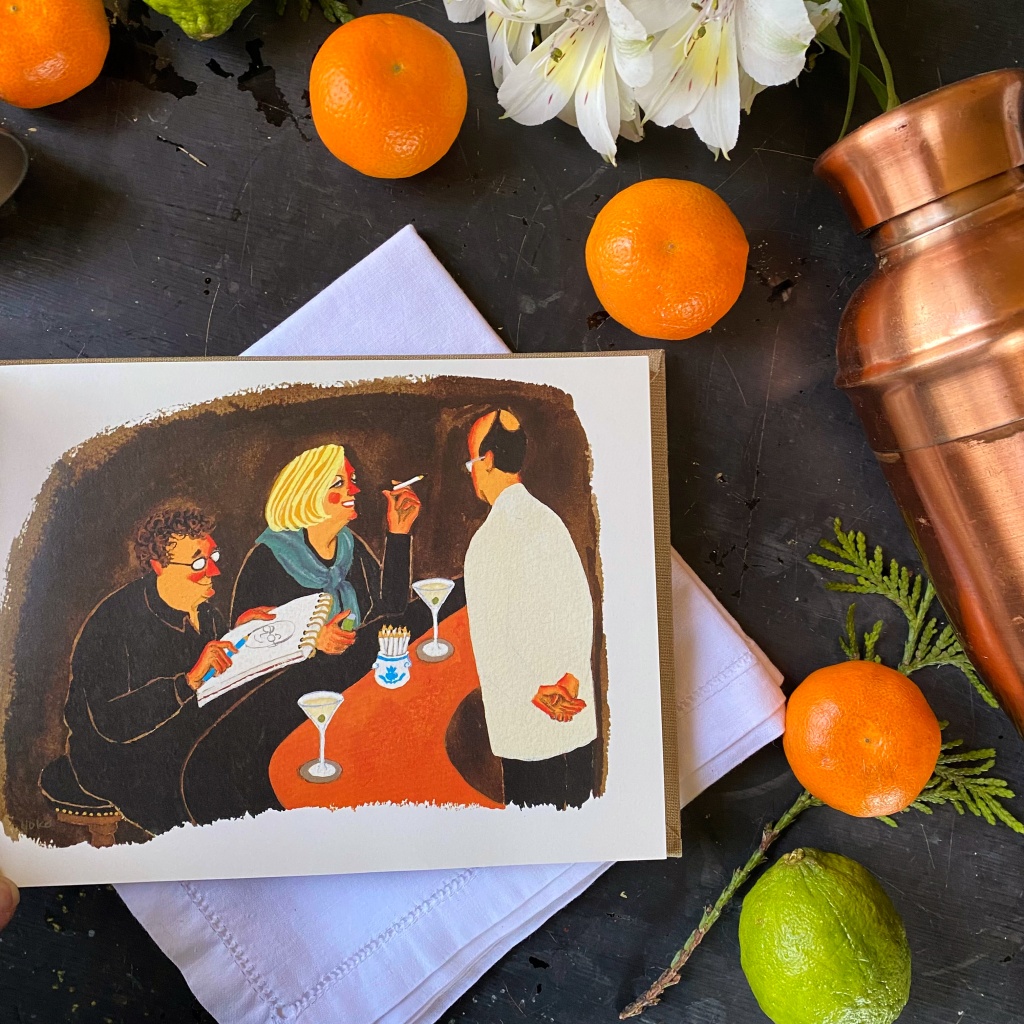
I don’t think Colin would mind what time of year you served the Ritz 75, just as long as it accompanied a good story and a pleasant environment. Ernest would definitely second the story part. Together, the two I’m sure would be happy to clink glasses and call it a festive night, so we’ll do the same. Cheers to the holiday season and to Colin and to Ernest whose books continue to capture our attention. Here’s to hoping your December is full of flavor, merriment, and a little something sparkly.

Ritz 75
From Cocktails of the Ritz Paris by Colin Peter Field circa 2001. Serves two.
1 1/2 oz lemon juice
1 1/2 oz mandarin juice, freshly squeezed
1 teaspoon of sugar
1 1/2 oz gin
Champagne to finish
Mandarin and lime rinds to garnish
Mix the lemon juice, mandarin juice, and sugar in a cocktail shaker. Fill with ice, and then add the gin. Shake a few times. Pour the mixture evenly into two glasses, then fill the rest of the glass with champagne. Garnish with slices of lime and mandarin. Add a cherry (optional) for additional color.
Cheers!
Holiday Classics: A Vintage Cranberry Relish Recipe from Historic Connecticut

Undoubtedly the most well-known food to come out of Mystic, Connecticut is pizza, thanks to the 1988 movie Mystic Pizza starring Julia Roberts…
The real-life pizza shop that inspired the film is still serving up hot pies every day in this beautiful, bustling, historic port city, but there’s a long-standing tradition of other delicious New England fare that has made Mystic, CT a go-to source for memorable cuisine too. The recipe featured here today might not be the star of a feature film but it definitely will be a star on your holiday table. Today’s post comes from The Mystic Seaport Cookbook, a collection of historic New England recipes first published in 1970 by Lilian Langseth-Christensen…

You might remember this cookbook from last Spring when we featured a hot rum toddy and a story about sailors and life on the high seas.


The recipe we are featuring here today isn’t quite as dramatic as that one, but it is equally delicious. Simply called Cranberry Relish, it’s an ideal alternative to canned cranberry sauce at Thanksgiving and travels the rest of the holiday season with tantalizing appeal. Post-Turkey Day, this simple New England cranberry relish becomes a crimson-colored companion to all sorts of festive Christmas party hors d’oeuvres, holiday-themed sandwiches, and cozy winter snacks.

Back in the 19th century, Connecticut was home to a number of cranberry farms, but it isn’t known for its commercial cranberry bogs anymore. In New England, that’s left up to the neighboring state of Massachusetts now, where they harvest over two million pounds of cranberries per year. Some farms in the Bay State have been run by generations of families that stretch back over 150 years. Thanks to modern machinery, cranberry farming is an easier endeavor but back then it was considered one of the hardest crops to farm and was done entirely by hand with wooden scoops combed through the cranberry bushes. No one was spared the arduous task of collecting cranberries, not even kids.



In Connecticut, there is just one remaining cranberry farm in the state left, but cranberry relish has been a part of the New England diet and therefore, the Connecticut diet, since colonial days when indigenous tribes taught early settlers how to pound them into pastes and sauces.
Harvested during the autumn months of September and October, by the time they make an appearance on the Thanksgiving table in the form of relishes, jellies, jams, compotes, sauces, and innumerable baked goods, cranberries add bright color, dimension, and acidic flavor to a holiday meal mostly recognized by its earthy brown and beige shades.

Pick up any New England cookbook, and the author will have their own preferred method of making this holiday side dish, but there will always be some ingredients that everyone agrees on. Technically, what differentiates cranberry sauce from cranberry relish is the cooking process. Cranberry sauce generally tends to be cooked on the stovetop – boiled down with sugar to a sweetened consistency that is thin and syrupy or thick and gelatinous depending on the amount of cooking time. Relish, on the other hand, more often than not, is mixed together in a blender and served chunky and raw with the addition of just a bit of sugar and some other aromatics including spices and citrus. The recipe featured here today is a cross between both. It’s cooked on the stove and includes citrus, raisins, and nuts for a more chutney-like consistency. The chunky texture and quick cooking method, make this Mystic recipe easy and versatile – ideal for all sorts of applications long after the Thanksgiving meal has been enjoyed.
First, we will look at the cooking method and then we’ll dive into the number of different ways to serve this version of cranberry relish. You’ll notice at the end, that this recipe offers a canning suggestion for storage but we just made one big batch and stored it in the fridge where it lasted for over a week and a half.

Cranberry Relish
From the Mystic Seaport Cookbook circa 1970
Makes 6 pints
6 cups fresh cranberries
1 cup cold water
1 cup boiling water
1 1/2 cup raisins
1 1/2 cups chopped walnuts
2 large oranges
4 cups sugar
Grated rind of 1 lemon
Wash the cranberries and pick out any remaining debris (stems, leaves, etc). Boil them in a cup of cold water until the skins pop and the berries become soft.

Blend them into a puree using a hand-held immersion blender…
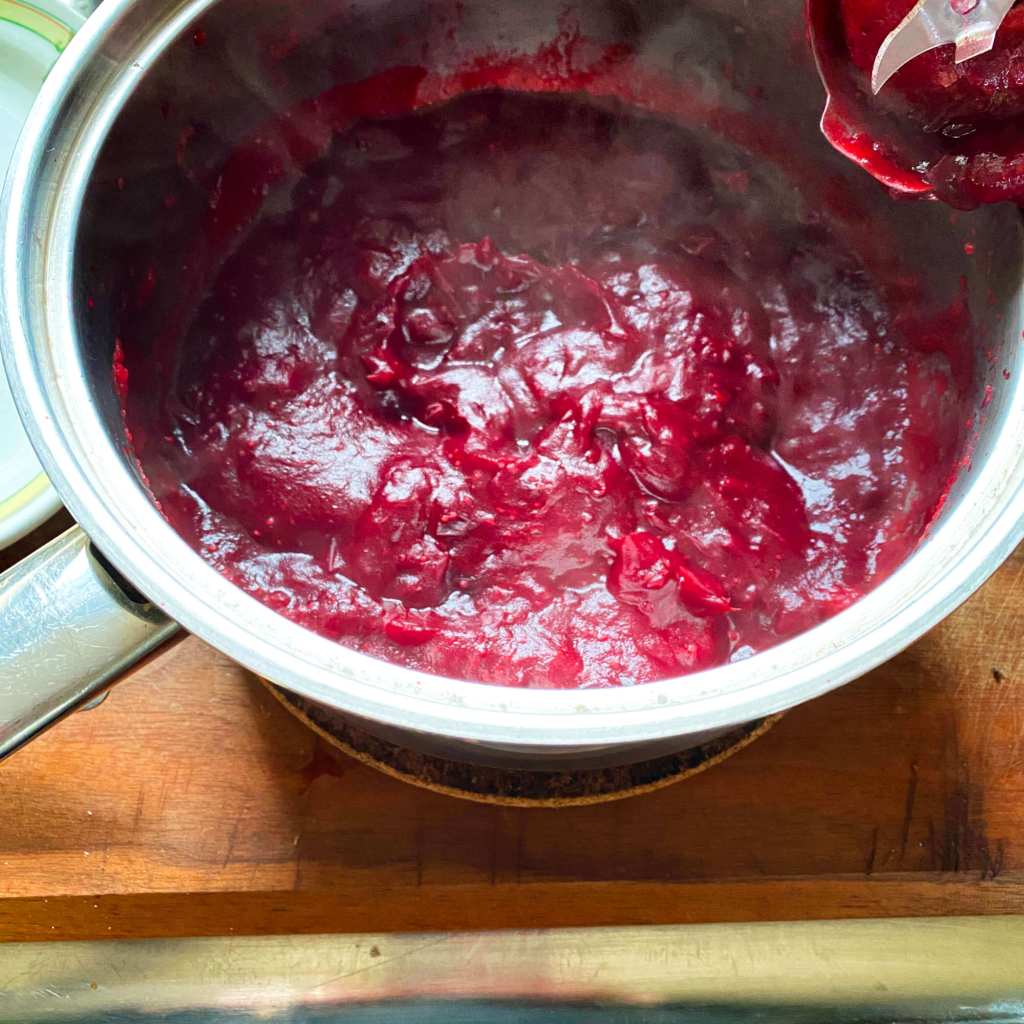
and then add the boiling water, raisins, walnuts, and sugar. Peel the oranges and dice the pulp. Scrap any white pith off the orange rinds, discard the pith, and dice the orange rinds. Add the rind to the mixture.


Next, stir in the grated lemon rind, and cool the relish.

Transfer relish to a bowl and serve or store in an airtight container in the fridge or pour into jars. If storing in jars, seal the jars with melted paraffin wax and shelve for a later date.
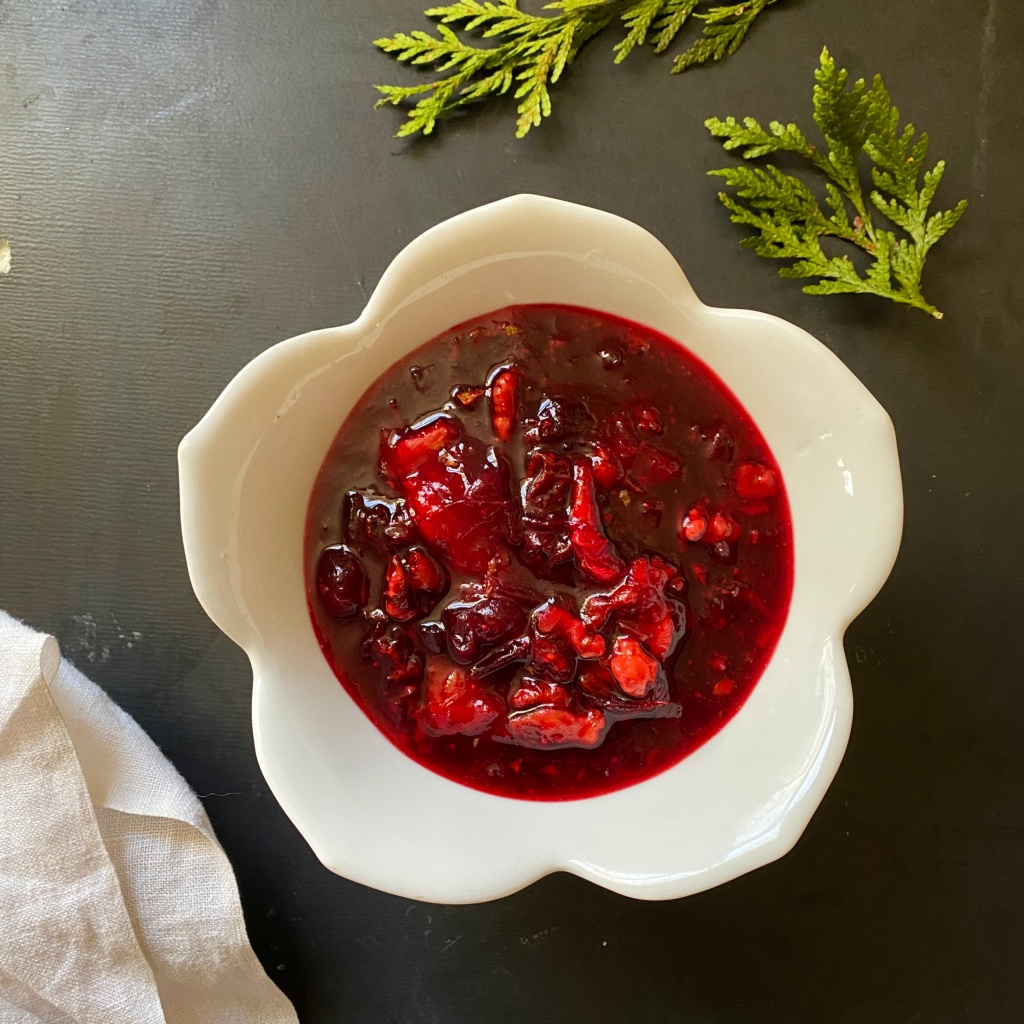
A lovely addition to the holiday table, this cranberry recipe contains the best of both worlds when it comes to sauce and relish. It’s syrupy but also chunky. It’s sweet but also tangy. The walnuts give it a satisfying dose of substance and protein. The citrus adds a burst of flavor that keeps the palate notes fresh and bright.


Naturally, it pairs well with turkey, mashed potatoes and gravy but we also love it when it is heated up and spread piping hot over Brie cheese and served alongside an assortment of crackers. Post-Thanksgiving, we like to spread this relish on bread just like mayonnaise for turkey sandwiches. Add it to the filling of turkey pot pie and the dish becomes more savory in an instant. Spread it on leftover Thanksgiving dinner rolls and serve it alongside eggs for breakfast or add it as a topper to oatmeal or yogurt. It’s also great on grilled burgers – beef, chicken, turkey or vegetarian. Basically, any place where you might like a little dollop of a sweet condiment, this one works wonders.

There’s no end to the zillion ways you can incorporate Thanksgiving leftovers into new and creative foods. That’s really the beauty of the holiday after all, isn’t it? All that cooking done days ahead of time allows a rest post-holiday with minimal meal-making effort required, except for quick reheats of the feast that keeps on giving. That leaves plenty of time to relax, read a book, enjoy your friends and family, play games, go for a walk, watch a movie. Perhaps after reading this post, Mystic Pizza will be on the viewing schedule. And maybe, depending on how adventurous you are in the kitchen, this cranberry relish might just inspire a new type of pizza topping too – Mystic style.
If you are looking for more vintage recipes to augment your Thanksgiving menu, we also recommend colonial-style Corn Pudding from the Williamsburg Cookbook and Homemade Citrus Cider from the 1989 Southern cookbook, Wild About Texas.
Hope you find this recipe just as delicious as we did. If you have any favorite cranberry sauce recipes, please feel free to include yours in the comments section. Cheers to the cranberries and all the cooking creativity they inspire.
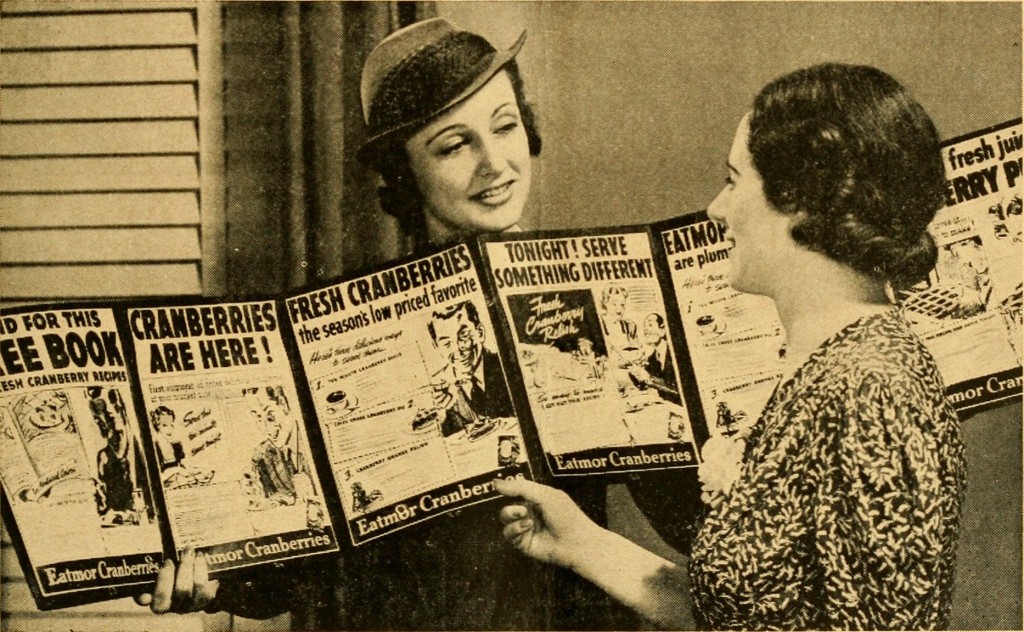
It’s Finally Here! Our Annual Shop Sale is Today
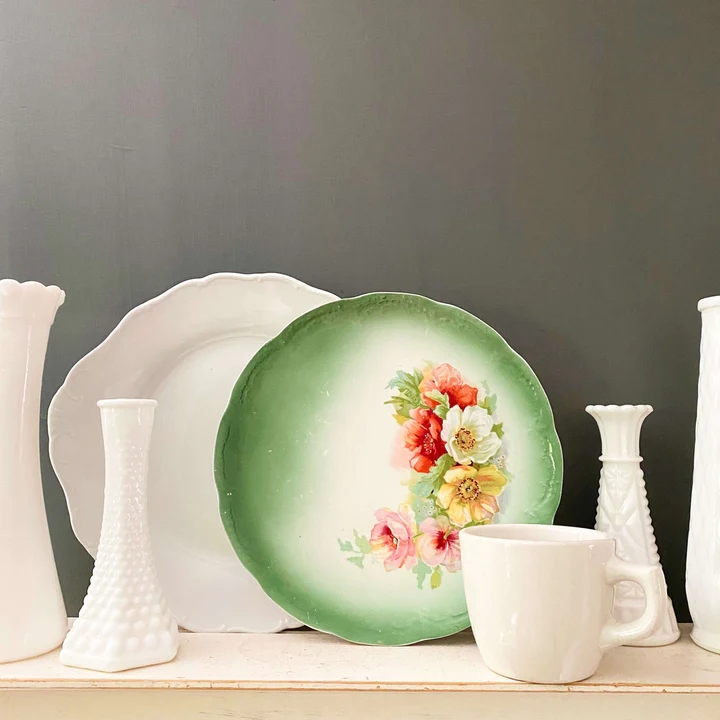
Happy All Souls Day! Just wanted to pop in with a quick reminder for all our intrepid culinary adventurers and history-fueled home decorators… our annual one-day-only 40% off shop sale is today!
There are a bevy of new (old) heirlooms that have arrived in the shop recently, so if it’s been a bit of time since you last visited hop on over to the shop to see our latest collections. Some of our favorites include these charmers…
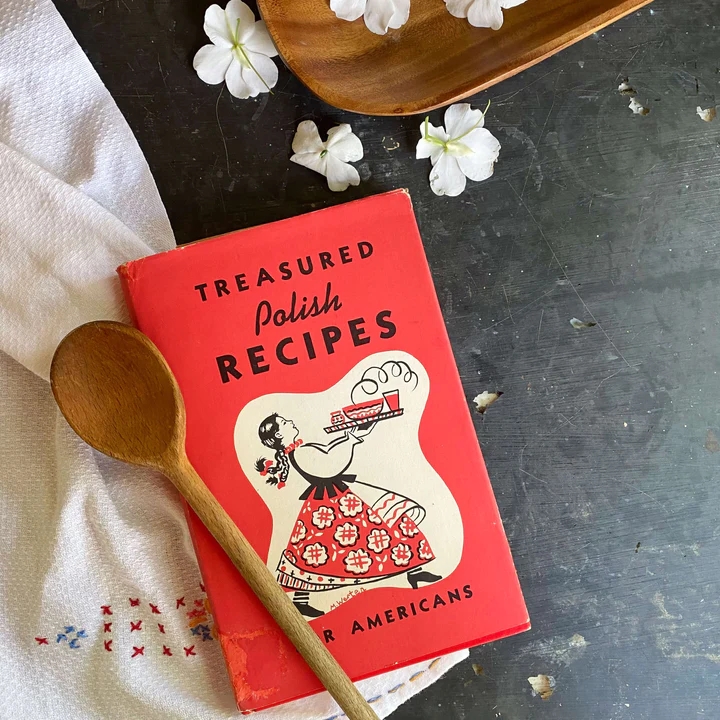


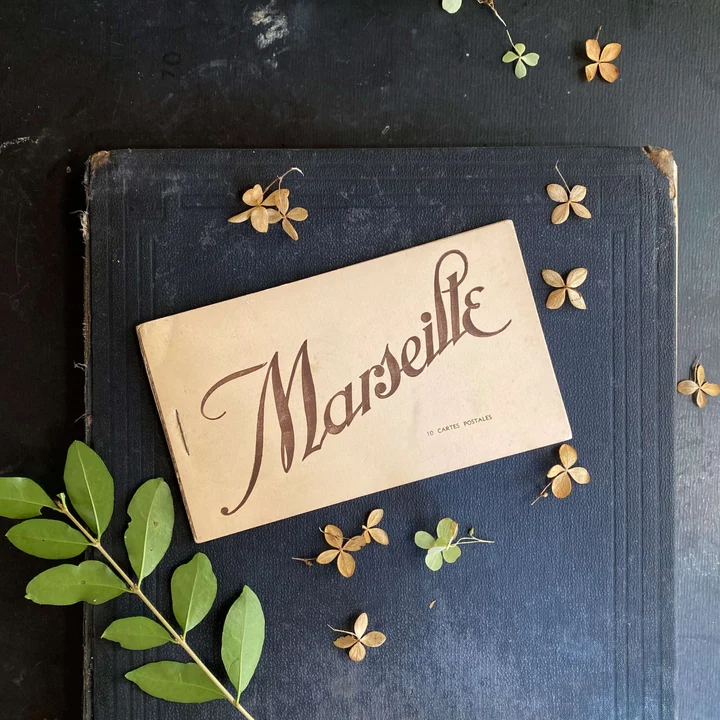






Interested in meeting some of the makers and collectors behind our shop’s beautiful heirlooms? Poke around each section and you’ll encounter these faces and the stories they tell about history and their place in it.
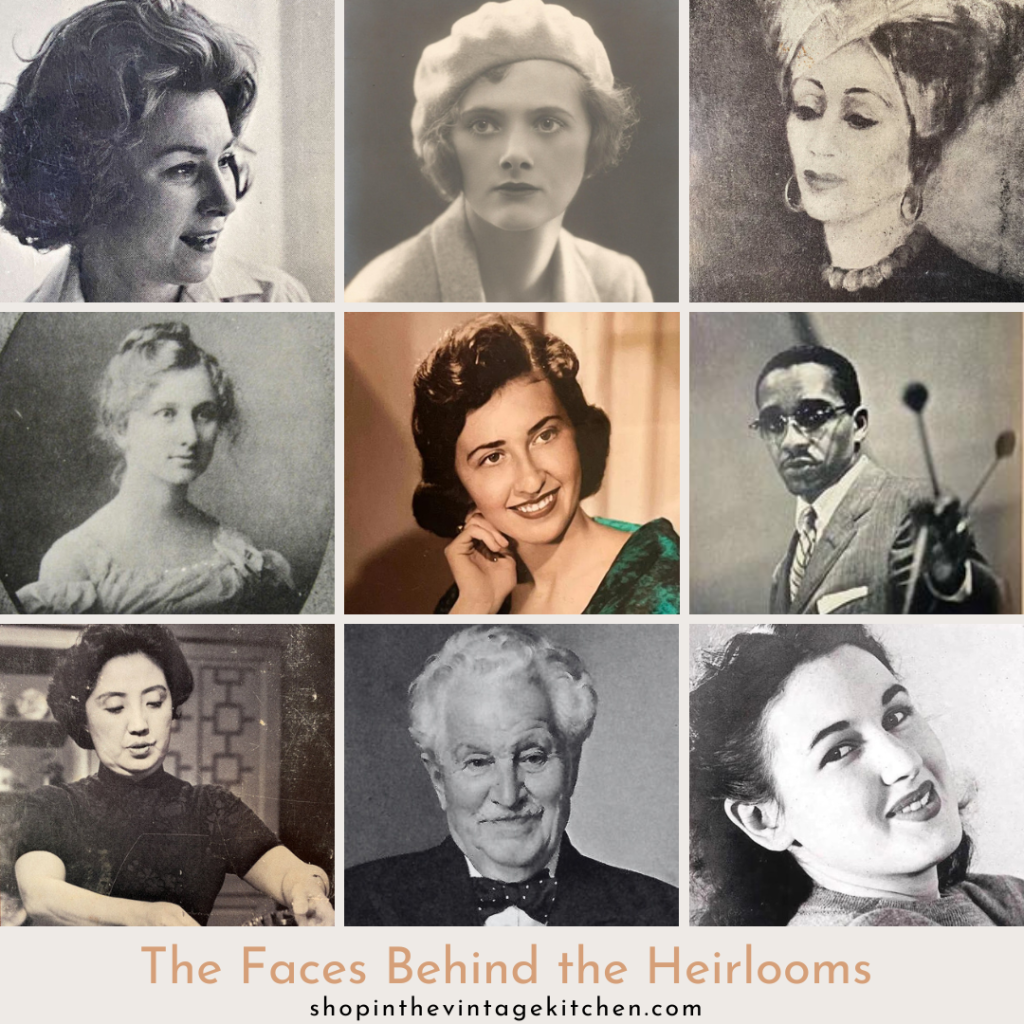
Hope you find a treasure that calls to your heart and adds an extra bit of joy to your home.
As always, the sale runs through midnight tonight and discounts are automatically applied at checkout. Thank you so much for traveling with us down these adventurous pathways of culinary history. Cheers to new inspiration and a day of happy shopping!

Calling All Souls: Our Annual 40% off Sale is Almost Here!

As soon as the pumpkins make their debut on the front porch, and the leaves shower down from the sky, and the extra-large soup pot makes its first appearance on the stovetop since early spring we know that the time is near. Our annual Vintage Kitchen shop sale is just ten days away! Mark your calendars for November 2nd, and on that day you’ll discover an extra treat – a deep discount – 40% off all items in the shop for 24 hours only.

If you are new to the blog or the shop, you might not know that we always host this sale on All Souls Day, which happens to fall on November 2nd every year. Technically a Catholic holiday, we selected All Souls Day not for its religious connection, nor its aura of spookiness given its close proximity to Halloween, but for the sheer fact that it is one of the few holidays in the calendar year that pays tribute to deceased ancestors. We wouldn’t have a shop full of wonderful heirlooms had they not traveled through other people’s lives, other people’s hands, for generations, collecting stories and memories along the way. To us, All Souls Day seems like the perfect day to celebrate vintage style.

This is our only sale of the year, so we love to make it count for shoppers looking to get a head start on holiday gifting, for decorators looking to add a bit of history to their tablescapes, and for home cooks looking for nostalgic recipes and new inspiration.


Since no two items in the shop are ever exactly alike, no sale from year to year is ever exactly the same either. Stories float in and out of the shop every day offering glimpses into kitchen and garden life that occurred a few decades ago or a few centuries ago. Just like stories posted to the blog, every heirloom in the shop comes with its own unique tale marking its place in history.

A collection of whiteware may at first look like just a bunch of plain white dishes, but each one is actually a gateway to a bit of history. Take this photo for example…

… all these pieces represent a specific time period from kitchens that span more than two centuries…

The platter made in 1900 is antique hotelware. The botanical designs on the 1977 ceramic coasters were inspired by the Tuileries gardens in Paris. The 1891 gravy boat was made in England and features handpainted flowers. The 1850 dinner plates are a rare set of English ironstone from the pottery of James William Pankhurst, which was in operation for only thirty-three years, a mere blip in England’s long-standing tradition of high-quality dishware manufacture.

As the shop continuously evolves from year to year, new faces from history emerge too. You’ll always find favorite standbys in the shop – Julia Child, John James Audubon, James Beard, Emily Post, the New York Times cookbooks, and of course all the best-loved Betty Crocker books, but each year we discover new faces from history too. This year, Carol, Daphne, Wadeeha, Agnes, Alice, Milt, Joyce, Andre and Dorothea came to the shop…

They told stories of art, literature, cooking, collecting, music, hospitality, immigration and gardening. Andre was a French wine expert. Alice was a Texas baker, a professional cake decorator, and an enthusiastic collector of cookie cutters. Dorothea was one of the most prolific nature illustrators of the 20th century, and Milt was an influential musician of the 1950s jazz scene.

That’s the joy of collecting vintage and antique kitchenware, isn’t it? Objects and stories intertwined together, forever making and creating memories old and new. I hope at this year’s sale you’ll find something that captures your heart. Maybe you’ll be the next caretaker of this antique 1830s-era Staffordshire bowl – the oldest antique that has come to the shop so far…

Or maybe you’ll find some inspiration among the handwritten notes tucked inside this vintage 1960s gardening book.…

Perhaps the traditional recipes of Mrs. Balbir Singh, also known as the Julia Child of India, will pique your interest…

Or maybe you’ll relate to the story of the Moses Hirsch family, creators of the 20th-century American Family Scale brand, who experienced the tricky rollercoaster ride of running a business among fierce competition, dramatic world events and kitchen modernization…
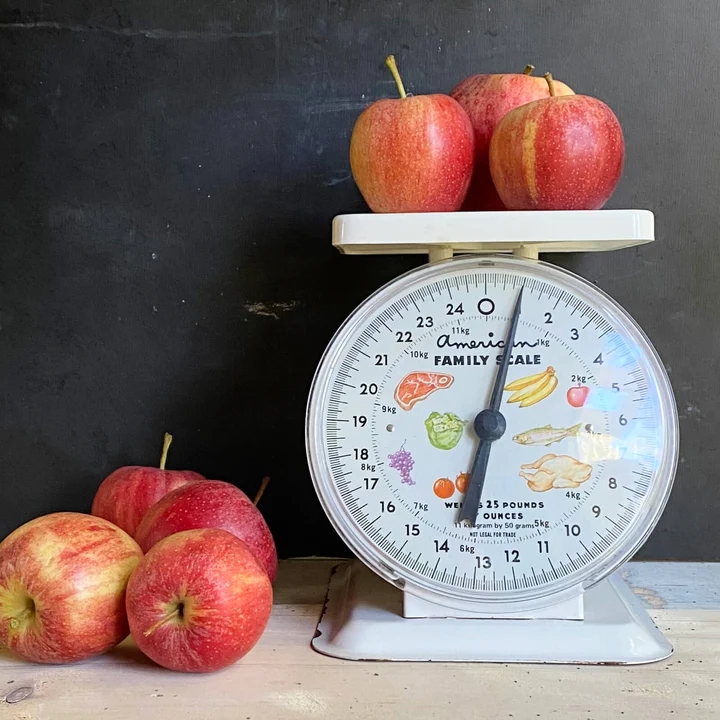
Or perhaps these two 1950s saddle tan Samsonite cases will call to your traveling spirit. Maybe they will become your dependable companions on jaunts to find the best croissants in Paris, the most delicious Spanakopita in Greece, or the most beautiful luau in Hawaii. Adventures big and small await with these two.

The sale begins at 12:01am (EST) on Thursday, November 2nd, 2023 and runs until 11:59pm (EST) that same day. All items in the shop will automatically receive the 40% discount at checkout, so there is no need to fuss with coupon codes or discount names.

While you wait for sale day to arrive, we encourage you to use the wishlist feature on our site if you have multiple items that have caught your eye. Just click on the heart underneath each listing title and it will automatically add the item to your favorites list where you can then add them directly to your cart when you are ready to checkout.

New vintage and antique heirlooms continue to be added to the shop daily, so stop by for fresh finds leading all the way up to the sale. And, as always, if you are looking for something that we no longer have in stock, please send us a message. We’ll be happy to add your name and needs to our waitlist.
Having said that, I hope on this year’s sale day you will find something truly magical that makes your heart sing with joy and your space sparkle with delight.
Cheers to all the old souls who inspired our sale. And to all the cherished items that our ancestors have left for us to enjoy. Happy shopping!

Highlights from the Summer Garden & A Big-Time Surprise Visitor

Before summer ends officially on September 23rd, I didn’t want the season to go by without a garden update on how the seedlings fared once they left the greenhouse in spring. Given the late date, this is sort of like a summer wrap-up post told mostly in images – a view of our New England garden from June to mid-September. Don’t miss the real garden surprise (visitor) all the way at the end!
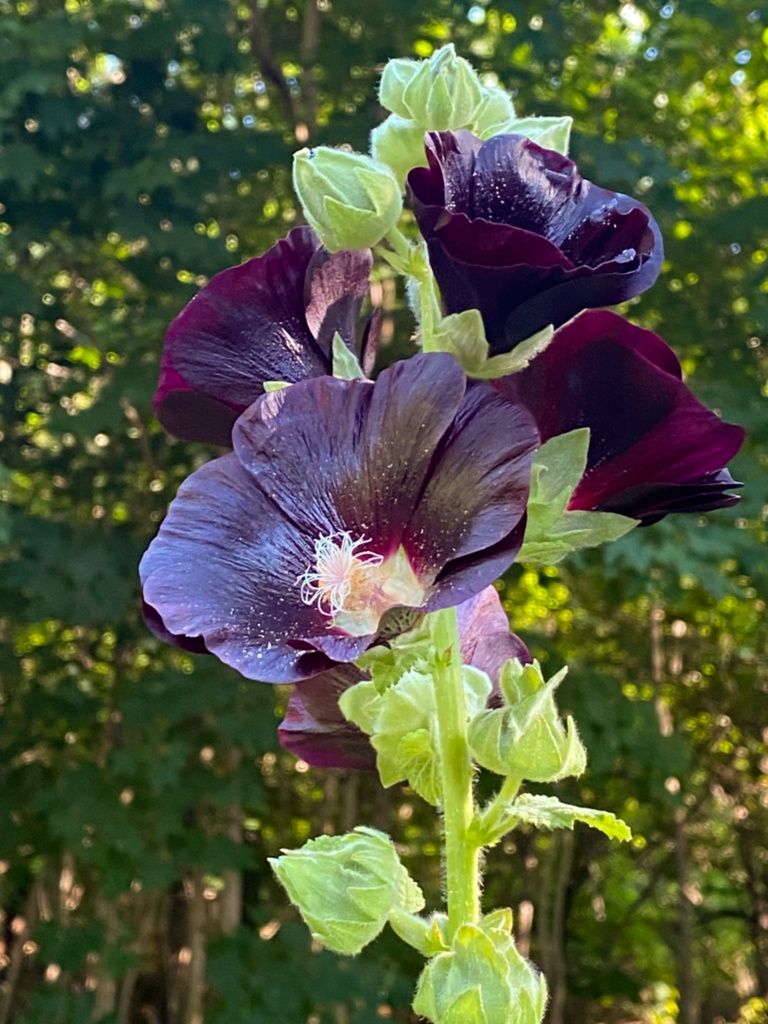



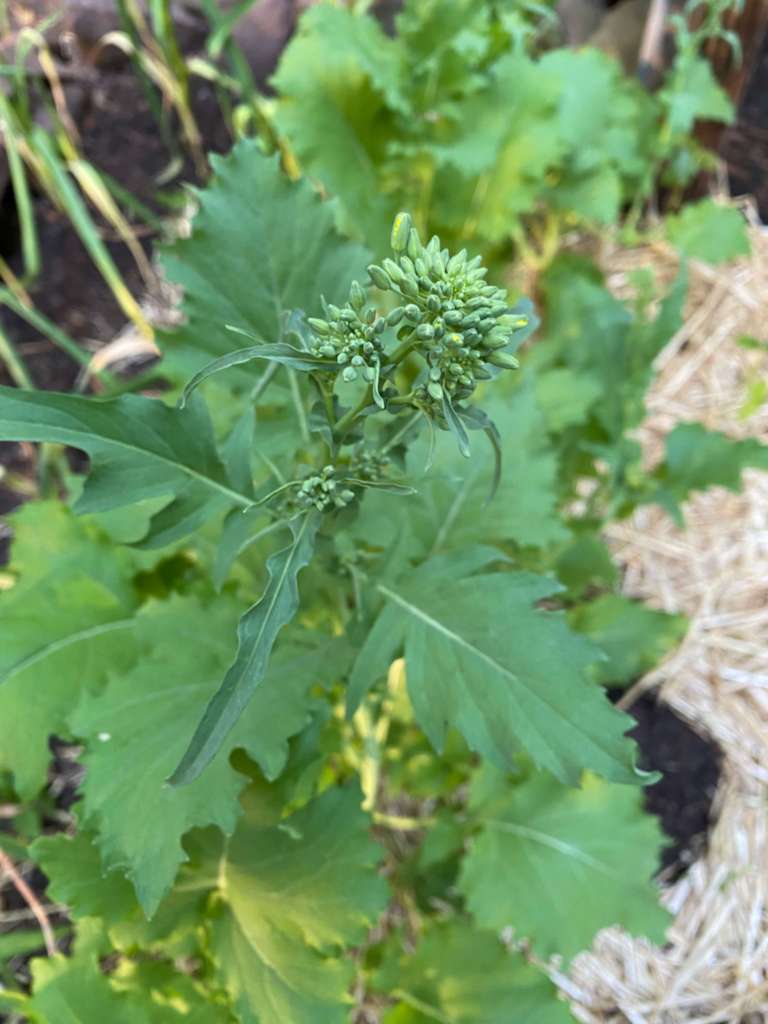


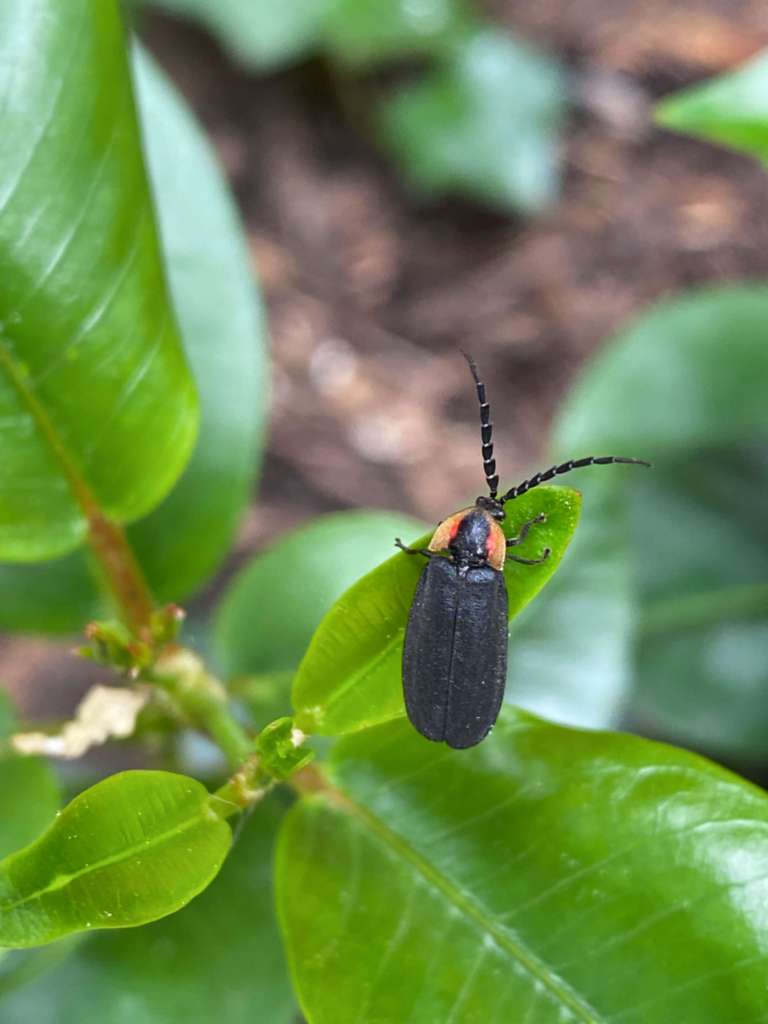
OUR 2023 BEST GROWERS
This year, we were most successful in growing the following list from seed. Everything here but the pole beans, zucchini, and peas were started in the greenhouse in winter or early spring. The rest were started from seeds sown directly in the raised beds. Further down in the post, you’ll find the list of flowers and vegetables that we struggled with along with the various reasons. Hopefully, other New England gardeners will be able to share their insights as to why or what may have caused the challenges. But for now, here is our list of winners this year…
- Tomatoes (Brandywine, Sungold Cherry, Sweetie Pole Cherry and Pineapple)
- Cucumbers (Marketmore)
- Collard Greens (Georgia Southern)
- Hot Peppers: Lemon Jalapenos, Santaka Chile, and Padron Peppers
- Rapini
- Pole Beans (Blue Lake)
- Flowers: Foxglove, Snapdragons, Hollyhocks, Mexican Sunflowers, French Marigolds, Zinnia, Geraniums
- Mint
- Lettuce (Rouge D’Hiver, Farmers Market Blend, Arugula, Salad Bowl Blend)
- Cascadia Peas
- Mexican Sunflowers
- Jarrahdale Pumpkins
- Black Beauty Zucchini (partially successful, more on that further on in the post).
- Cucamelons
The cucamelons were one of our most enthusiastic growers this year. If you are unfamiliar with these little charmers, they are native to Mexico and look like miniature watermelons but taste like lemony cucumbers.
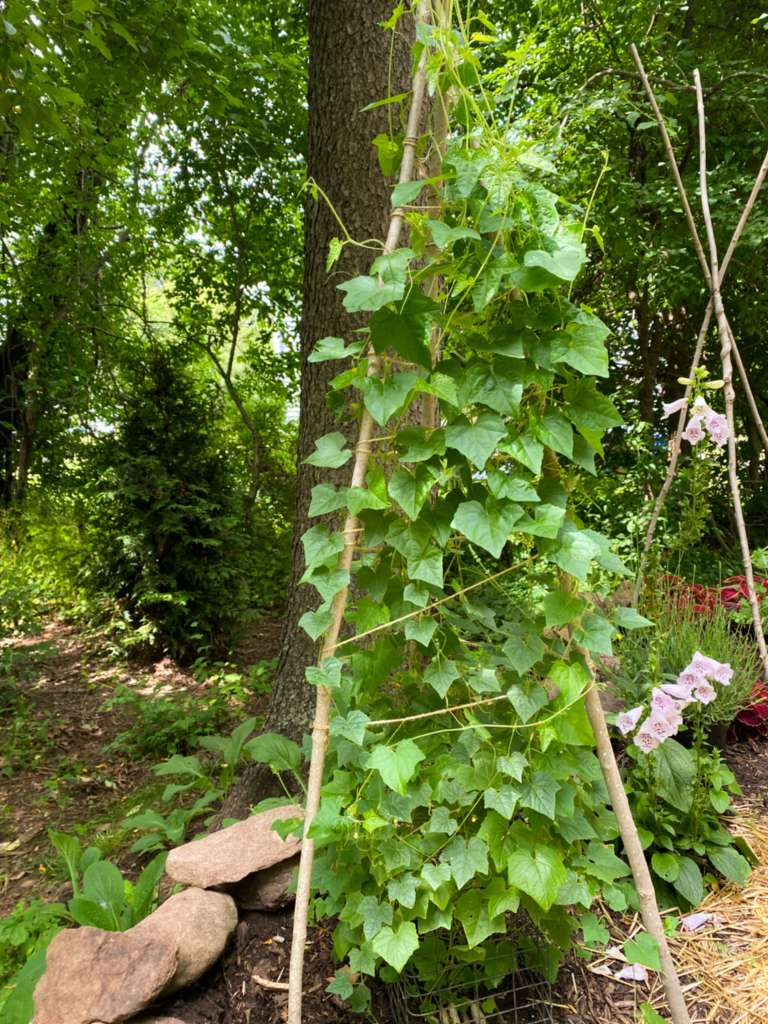




So much new information has been learned about how to proceed this fall. What worked, what didn’t, what we can improve on and what we can forget, what we can nurture now and what we can save for another day or another year. A lot of surprises ensued. What worked great last year didn’t necessarily work as well this year. One thing that drastically improved though was the soil (thanks to a year of composting and leaf mold, and we didn’t overwater thanks to the miracle moisture meter reader. The garden was definitely much more lush and vibrant and full this year.



One of the surprises of the season were the Black-Eyed Susan vines. We almost gave up on these guys completely since they grew so slowly for so long. We figured they weren’t happy in the bed or the inground mound where we planted them. It took five months from seed to first flower (and our forgetting about them), but once they got to the bloom stage they really took off and haven’t stopped since. Now they are happily climbing all over the sides of the rock-walled raised beds and are producing lots of pretty little flowers. I learned from our local nursery, that they have the best luck propagating these flowers from clippings, so we are going to try that method this fall.



The moonflower vines were a placeholder and an experiment to see if we liked a living wall on one part of the back of 1750 House. As it turns out we do! Next year, that wall will be covered in English ivy, which has already been planted at the base of the moonflowers. The moonflower seedlings were purchased from our local nursery, but we will definitely grow them again somewhere else in the garden next spring, this time from seed. They are fast growers and produce big beautiful white flowers, the size of your hand.
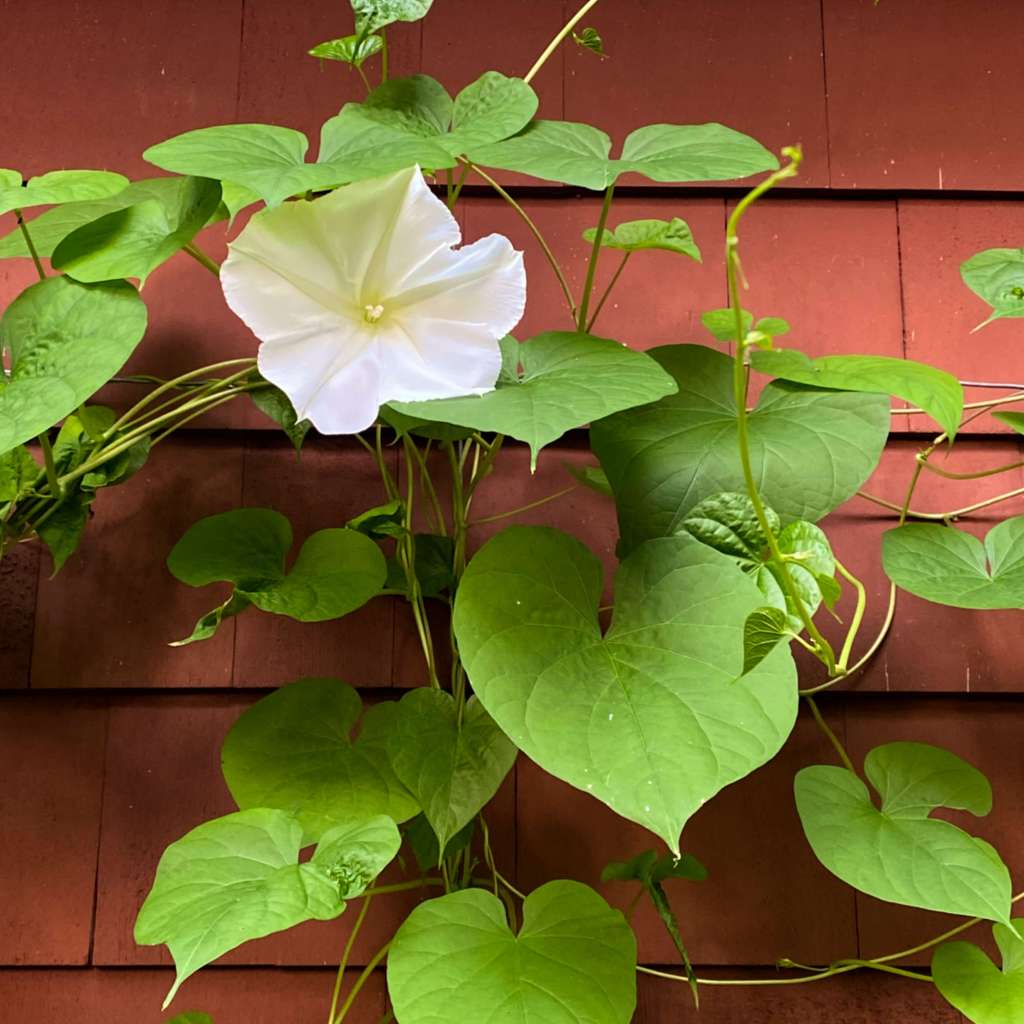


Our Biggest 2023 Garden Challenge: SLUGS
Oh the slugs. They slithered, they slimed, they feasted their way through the broccoli patch, the herb garden, the marigolds, the nasturtiums, the lettuce, the pepper plants (leaves only), the colleus and the cosmos. We tried all sorts of ways to deter them – sand barriers, chili powder sprinklings, tin foil, beer traps, nightly hand-picking.

We were most successful with the beer traps – sinking a small container in the garden soil filled with about 1/4 cup of beer. The beer attracts them to take a swim and then they depart this life in one big vat of boozy revelry. The other thing that worked well was handpicking (we relocated all the slugs to the woods each evening to carry on life there), but this was a never-ending task – every single one we picked was replaced with a new slug the next night. Plus, this hand-picking was a pretty unappealing and slimy exercise. Our buckets each night were filled with at least 30-40 slugs. Interestingly, they left all other plants in the garden alone, which is why we had such great success with everything else. Next year, we are going to try growing all of these feast-worthy plants in the greenhouse over the summer to hopefully keep them slug-proof.



Things That Didn’t Grow Well in the Garden This Year…
- Zucchini (Black Beauty) – while they did grow big and lovely and flowered every day pretty much throughout the summer, two plants only produced three zucchini. Three was a definite improvement from last year’s crop which was zero, so we are moving in the right direction but this was also the second year they eventually became overcome by powdery mildew, even though we tried two different treatments: baking soda and neem oil
- French Melons (powdery mildew victim #2)
- All the herbs – parsley, basil, chives, sage, and thyme (The work of the mighty slugs! The only herb they left alone was the rosemary).
- Cosmos – our second year in a row trying to grow these. (They produce a few flowers but then the plants dry up and die off)
- Bush Beans – we rotated them to a different bed this year underneath the tomato plants and they did not like it. Maybe it was not enough sun for them once the tomatoes really started growing.
- Broccoli (DiCiceo) – we harvested one broccoli head harvest before the slugs arrived for the season
- Straw mulch – The intention was to use this as mulch to help with the slug situation but, as you can see from the list above, it had no effect and turned out to look really messy in the garden. Aesthetically it wasn’t our favorite.
- Sunflowers – also our second year trying to grow these. Starting them in the greenhouse this year helped but they were weak and spindly and mostly fell over before July started.
Back to happier stories…



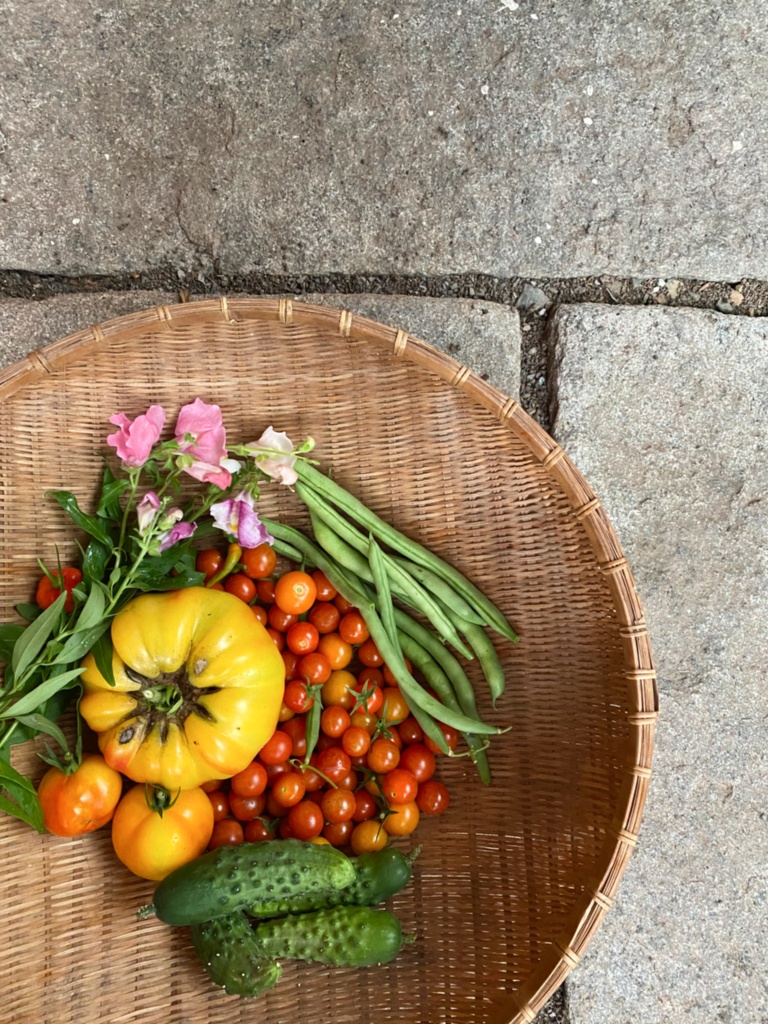
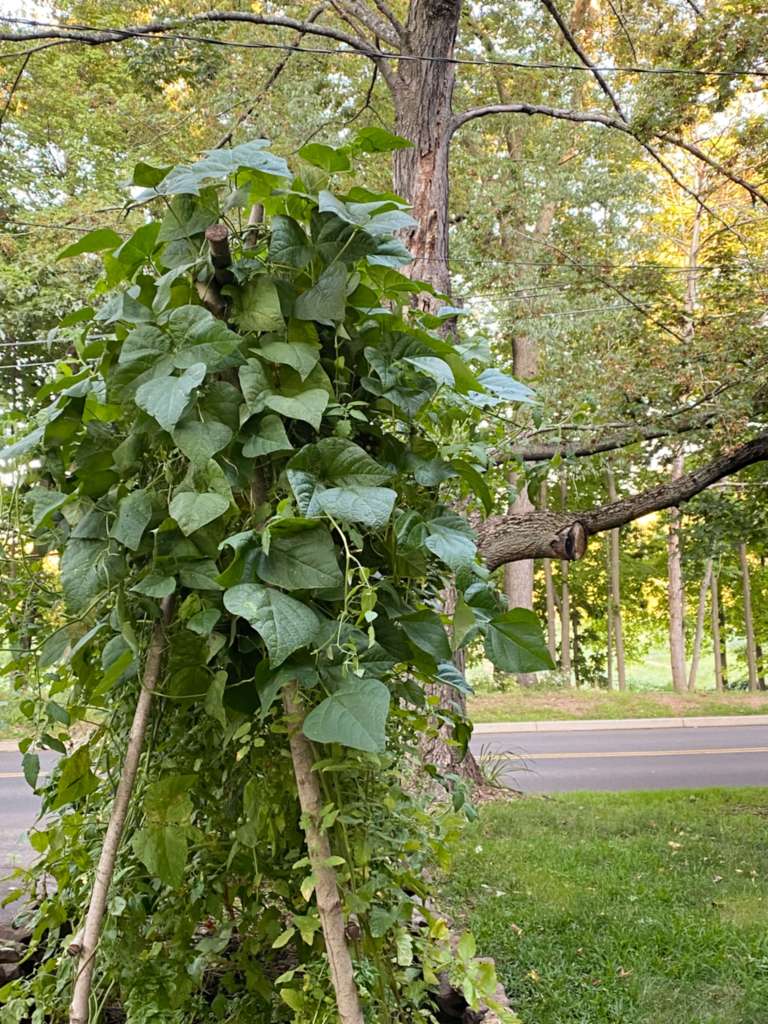



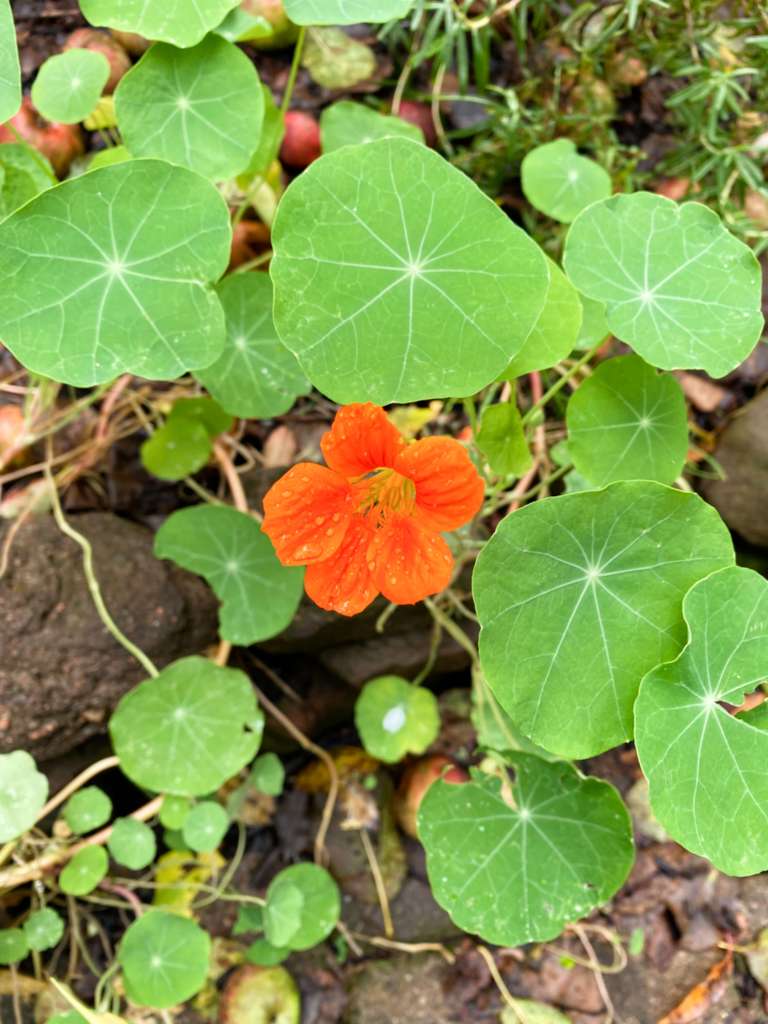
All things considered, this year’s garden was definitely an improvement upon last year’s just as far as soil health, pollination count and bird and frog activity. Last year we had more voles and chipmunks but this year we had more slugs. Last year we had more heat but this year more humidity. Last year we had barely any flowers, and this year, we enjoyed ample bouquets all summer long. That’s the joy of gardening though I think. It’s always changing. Always engaging us.
Although the temperatures are still in the 80s, and there are still a couple weeks of summer left to go, Autumn is definitely beginning to cast her spell over the garden. Our first pumpkin just formed, the paradise apples are falling and our first sighting of a Spotted Orbweaver joined us overhead on the patio chandelier one night at dinner. Fall is coming.
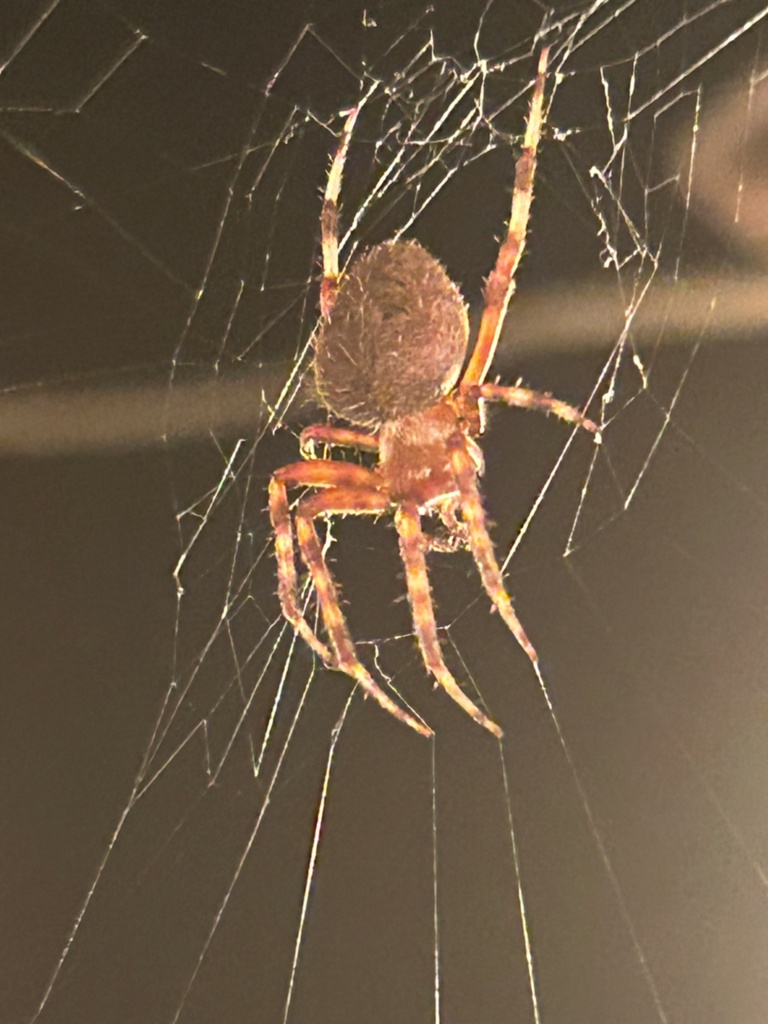


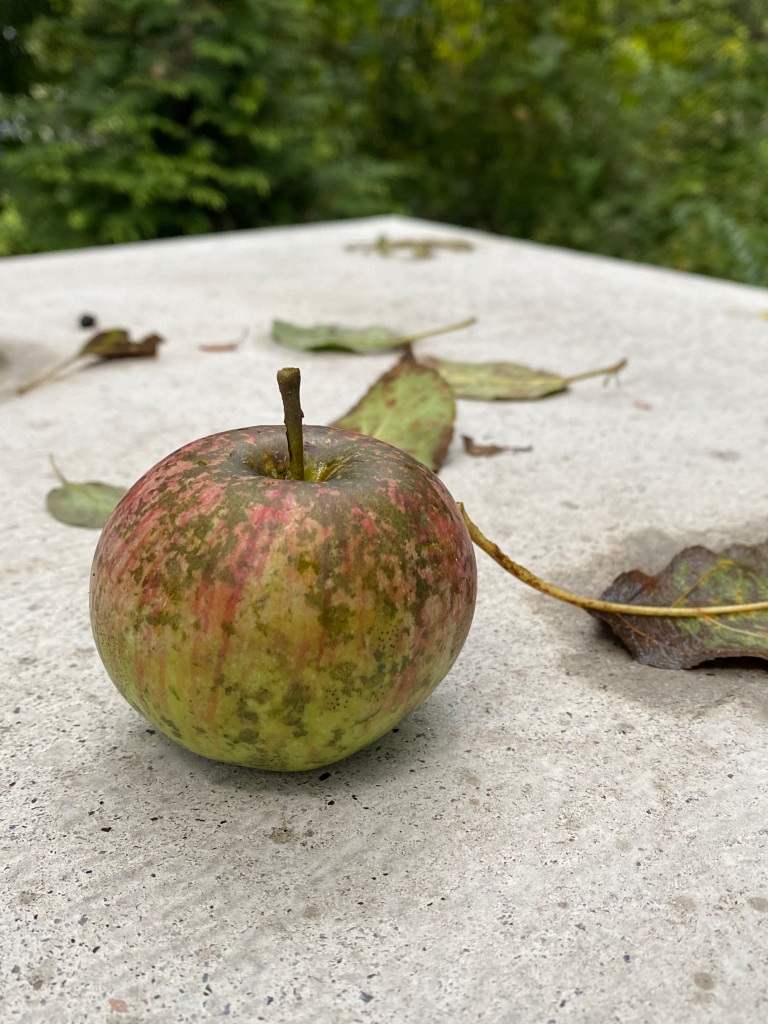
Spiders, slugs, birds, bees, and Juna aren’t the only things that came to visit the garden this summer. Recently, we installed an outdoor trail camera to see what sort of wildlife came to visit in the night. Our most frequent sightings so far have been the wild rabbits (hop over to Instagram to see our favorite little bunnies zooming around the yard), along with the occasional raccoon, and opossum, two coyotes and a pine marten not to mention a bevy of early morning birds and squirrels. But our most dramatic guest so far is this guy…

A bobcat! He passed right through the yard with no incidents and thank goodness no bunnies. It’s pretty magical that such an extensive amount of wildlife lives while we sleep, carries on while we dream, travels about while we stay put for hours on end. We can’t wait to see what shows up this winter.
Last, but not least in this highlight of summer pos , we have two exciting sneak peeks of two very big 1750 House outdoor projects about to be unveiled soon…


We can’t wait to share them with you! Stay tuned!
In the meantime, cheers to summer 2023, to all we learned and all we reveled in, and to Lady Nature for continuing to be our biggest mentor and our guide. We’d love to hear how your gardening adventures fared this year. Please tell us all about it in the comments section. It’s so important to share the highs and lows, regardless of what part of the world we live in so that we can all learn together. The more gardening joy the better.












